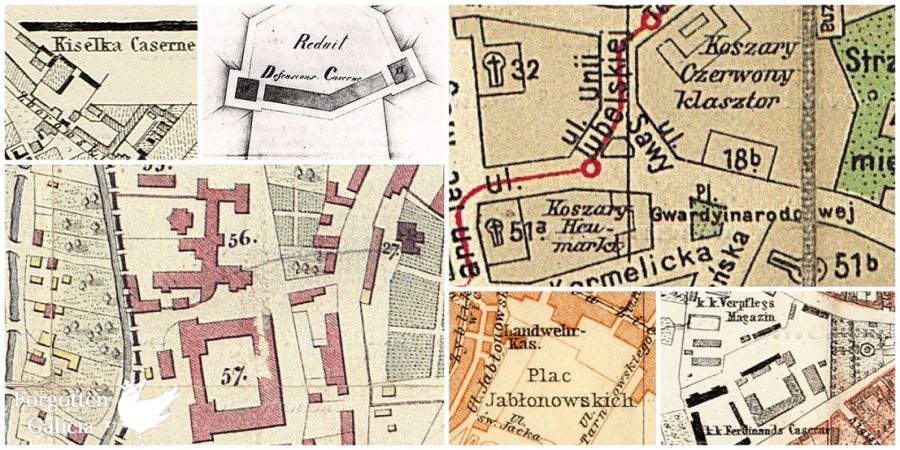From the end of the 18th century to the middle of the 19th century
After the Habsburg Monarchy began to rule Galicia, a large number of land holdings became property of the Austrian military. This is no wonder as the military required considerable resources such as fields, mills, magazines (ammunition storehouses), and barracks (Ger: Kaserne/Caserne; Polish: koszary; Ukr: касарні, казарми, кошари).
Until the end of the eighteenth century, there were no specially built barracks in Lviv. When the Austrian military appeared in the city in 1772, they used the premises of Lviv’s monasteries. This coincided with Josephinism – a series of reforms introduced by Habsburg ruler Joseph II, some of which targeted the Catholic Church and banned several monastic orders. As a result, many of the Lviv’s monasteries were dissolved and their land and buildings were taken by the city.
***
Below I’ve gathered information about the oldest barracks in Lviv together with plenty of historical map fragments which show where these barracks appeared and how their territories were transformed throughout the years. It also allows us to follow how the barracks were marked on the maps, which were created in German or Polish – the two official languages of Galicia. The barracks were typically named after the type of military personnel that was quartered in them, but also took on names which referenced the former owners of the territory or were named in honor of a member of a Habsburg dynasty. Interestingly, we can also see changes in German orthography – most noticeably, the different spellings of the word “Kaserne” and the use of the letter “ſ.”
Artillery Barracks
Alternative names: Rothes Kloster Artillerie Kaserne; Artillerie Caserne; Koszary czerwony klasztor
Formerly: Territory of Collegium of the Theatines, aka “The Red Monastery” (1738-1746)
Transferred to Austrian military: c. 1785
Housed: Artillery
Location: 6 Kryvonosa St.
Today: Units of the Ministry of Internal Affairs
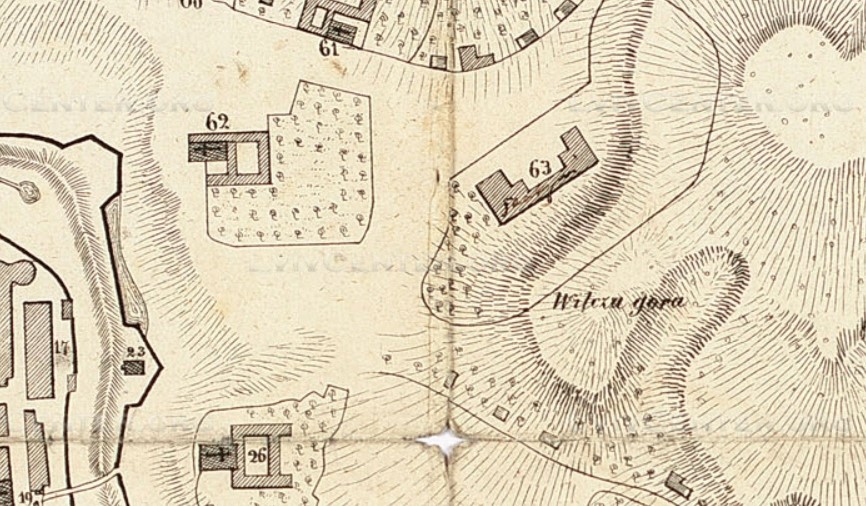
Before 1775 | No. 63 Teatyni 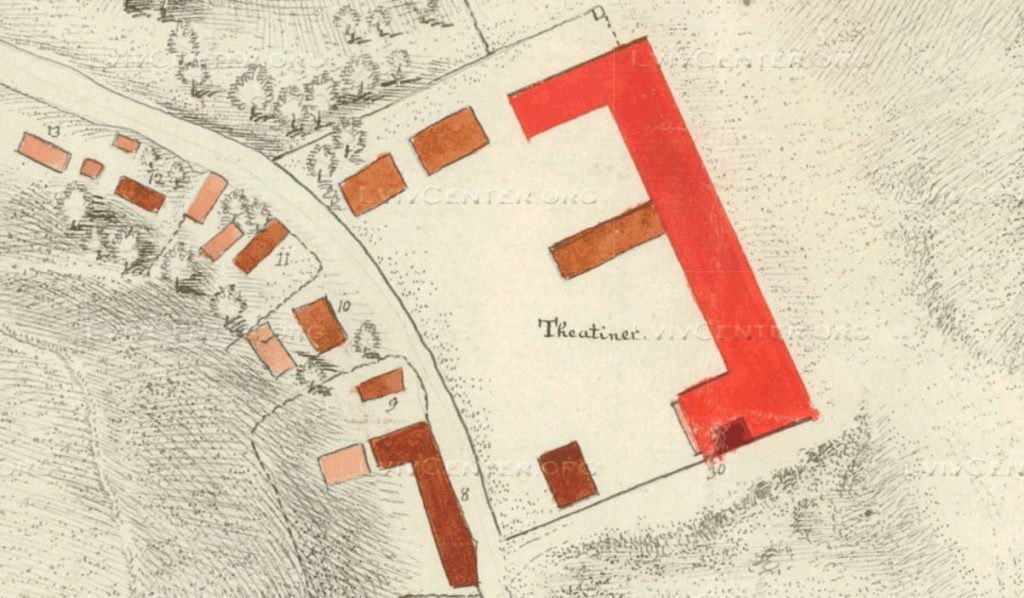
1777 | Theatiner 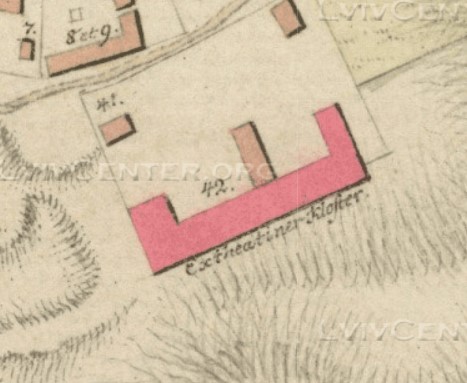
1802 | Extheatiner Kloſter 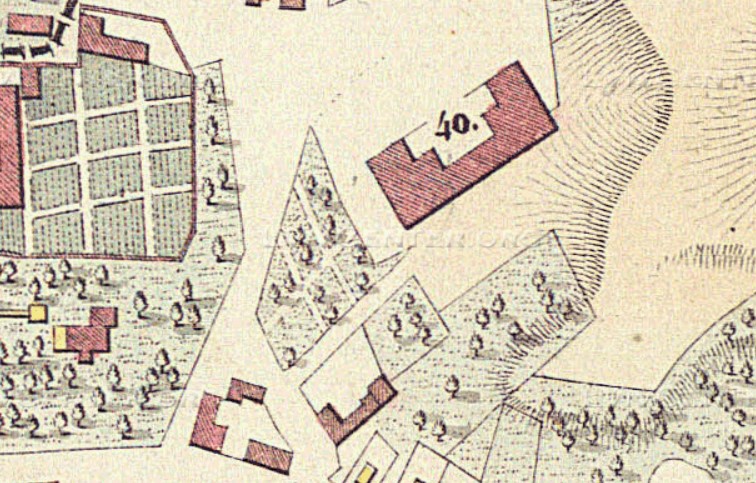
1829 | No. 40 Artillerie Kasserne 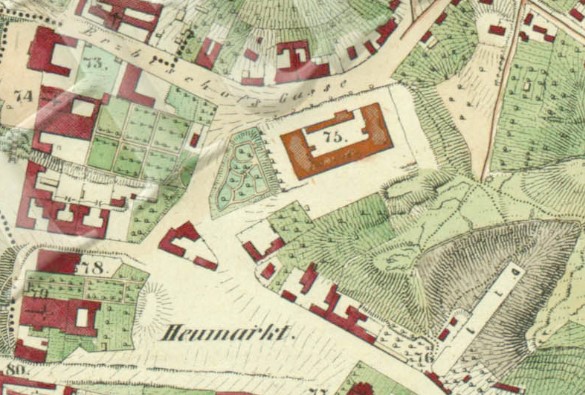
1844 | No. 75 Artillerie Kaserne 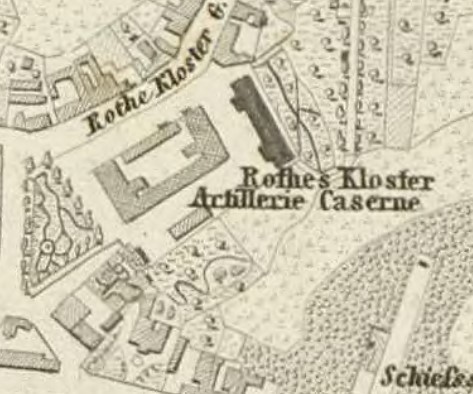
1855 | Rothes Kloster Artillerie Caserne 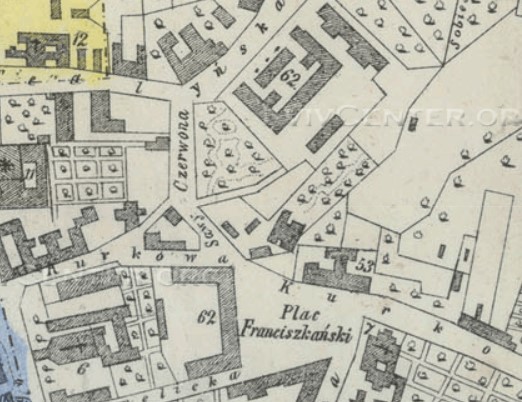
1871 | No. 62 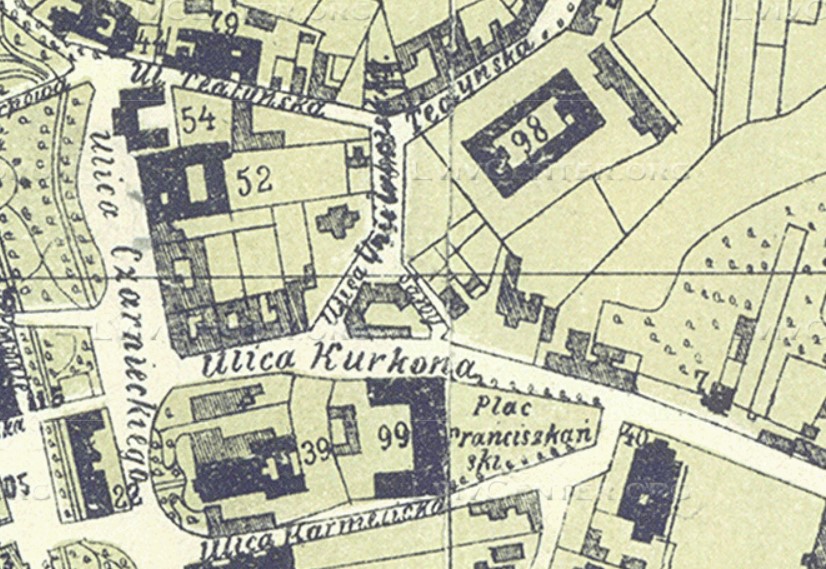
1892 | No. 98 Koszary 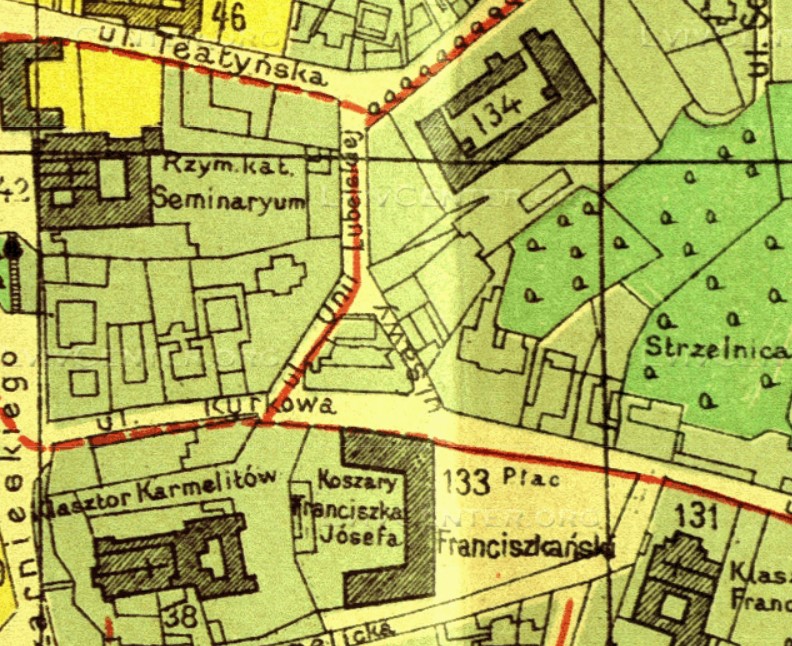
1895 | No. 134 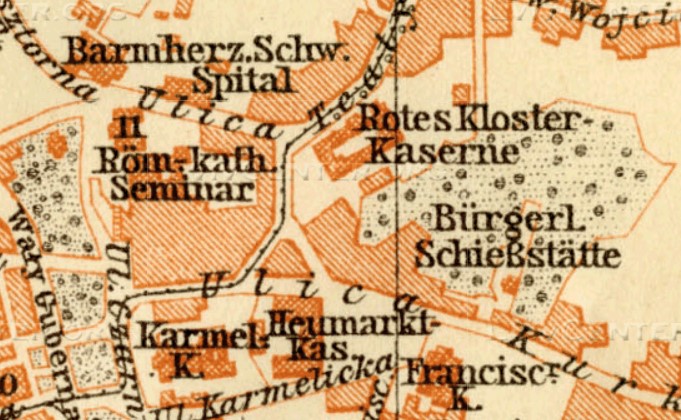
1911 | Rotes Kloster Kaserne 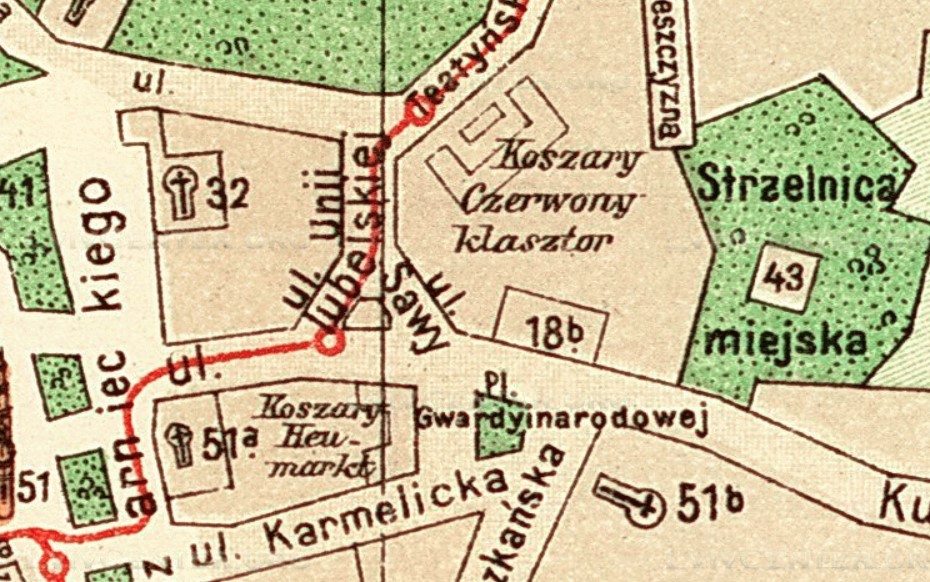
1911 | Koszary Czerwony klasztor
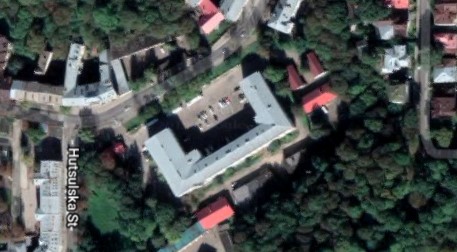
The first permanent barracks in Lviv were the reconstructed premises of the so-called Red Monastery – the Collegium of the Theatines. The name Red Monastery (Ger: Rothes Kloster; Pol: Czerwony klasztor) came from the color of the roof.
The collegium building was built in 1738-1746 by architects Nicolas Salvi and Gaetano Chiaveri. In 1785 as a result of Josephinism, the Theatines were evicted and the building was given to the military to be used as an artillery barracks.
The complex, in addition to the barracks, included a gunpowder magazine in the renovated St. Wojciech Roman Catholic Church and two gunpowder magazines near the foot of the High Castle. The front wing of the barracks was rebuilt by the military after 1818 and the building took on the style of Classicism. The structure was used as a barracks until 1989. Today it houses units of the Ministry of Internal Affairs.
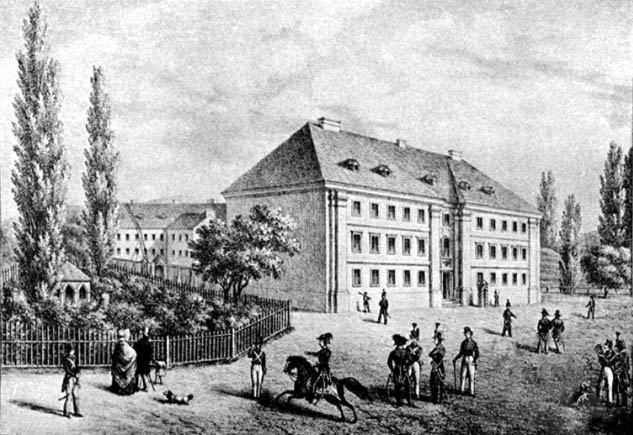

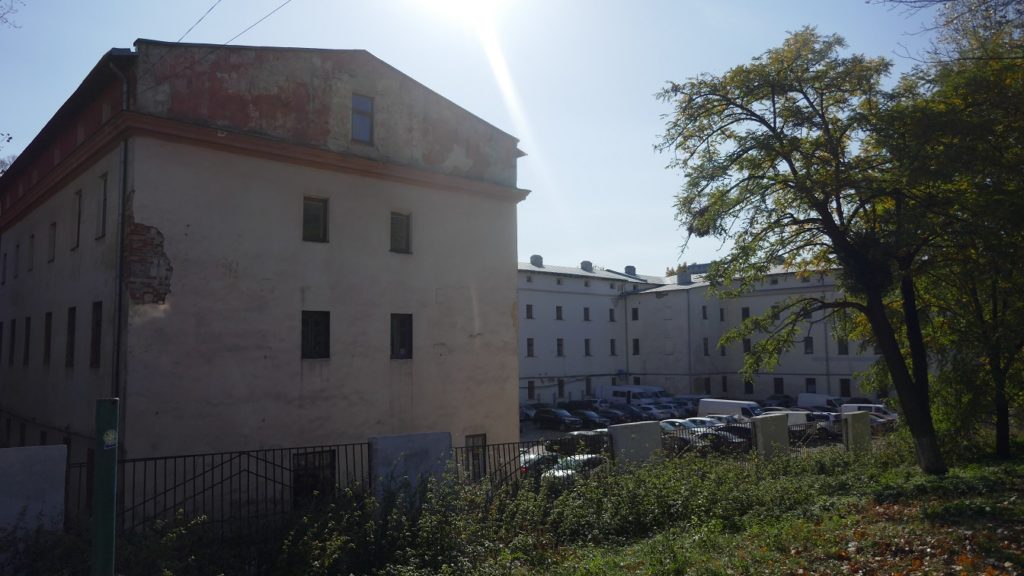
The structure today 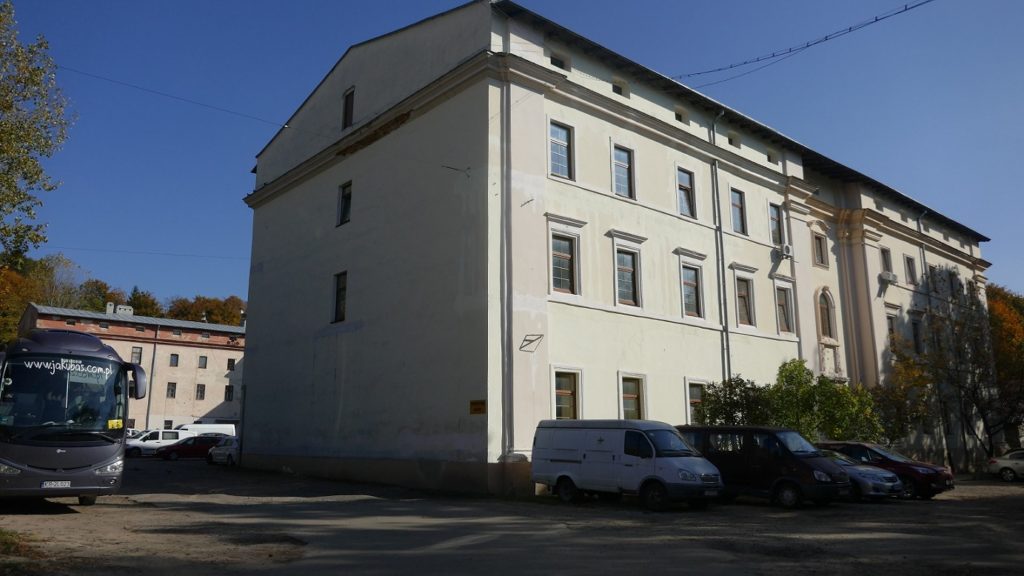
The structure today
Small Barracks
Alternative names: Kleine Caserne; Kleine Infanterie Kaserne; Dom Karny Wojskowy; k.k. Strafhaus
Formerly: Territory of Armenian women’s monastery
Transferred to Austrian military: 1782
Housed: Infantry
Location: 9 Zamarstynivska St.
Today: Lviv State University of Internal Affairs
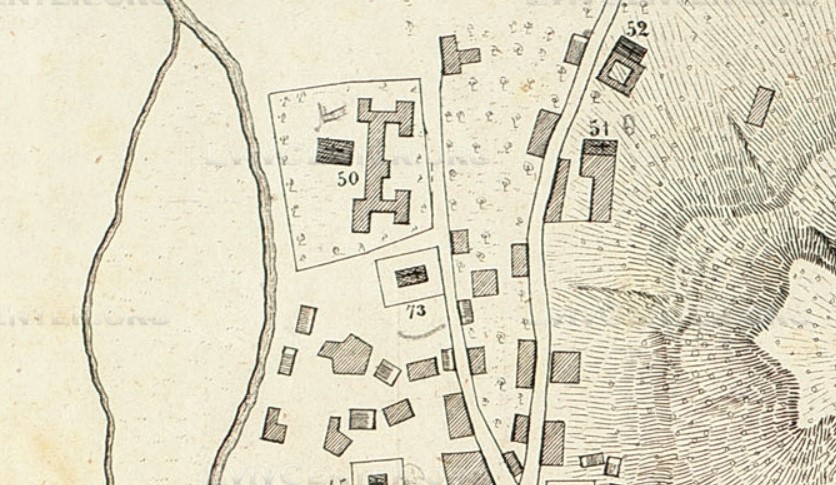
Before 1775 | No. 50 Missionarze 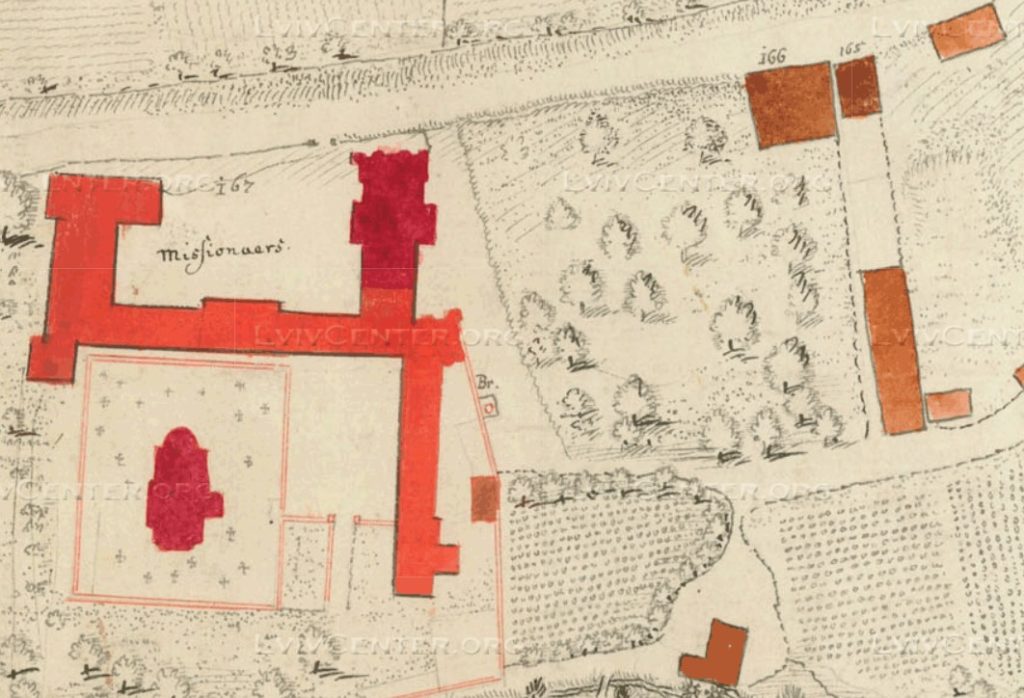
1777| Misſionaries 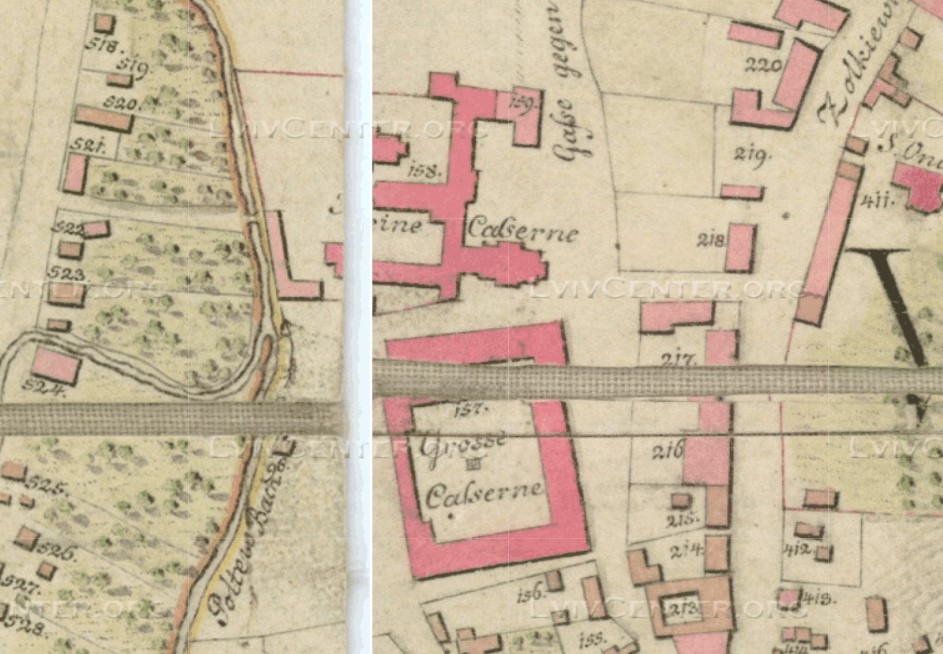
c. 1802 | Kleine Caſserne 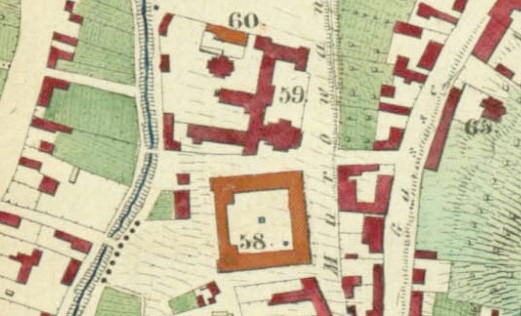
1844 | No. 59 Kleine Infanterie Kaserne; dermalen Provinzial Strafhaus 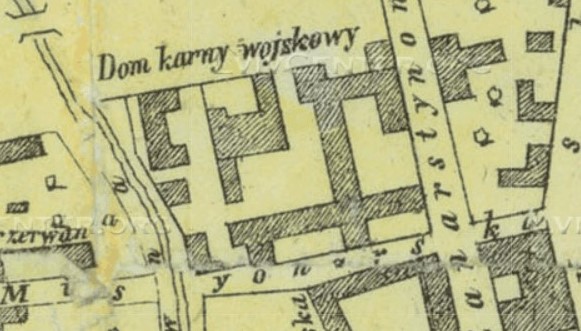
1871 | Dom karny wojskowy 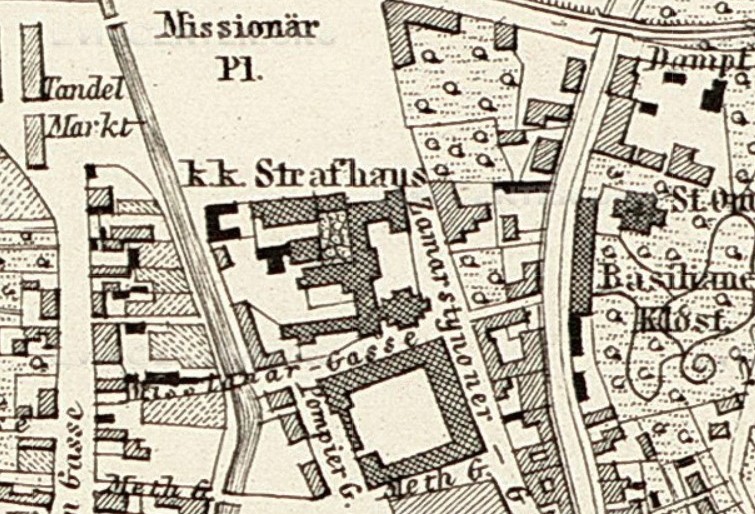
1878 | k.k. Strafhaus
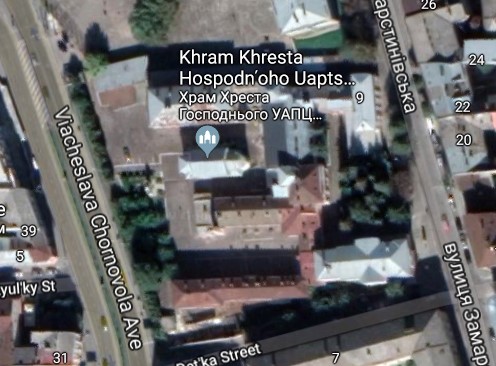
Тhe so-called Small Barracks were erected on the site of an Armenian women’s monastery built in 1629-1637. In 1671 the monastery buildings were given to the Theatines, while the Holy Cross Church (no. 73 in first map above) and cemetery remained with the Armenians. The following century the Theatines sold the buildings to the Order of the Lazarists, also known as the “Missionaries,” who c. 1744 rebuilt the monastery and completed the Church of St. Kazimierz (no. 50 in first map above).
In 1782, during the reforms of Emperor Joseph II, the Missionaries were evicted and the requisitioned premises were first used as a military hospital and later were transformed into a garrison prison and barracks. After the new Large Barracks were built nearby, the Church of St. Kazimierz and former monastery buildings housed a military court with its own prison – a provincial penalty house (marked as “dermalen Provinzial Strafhaus” & “k.k. Strafhaus” in German, and “Dom karny wojskowy” in Polish). In June 1941 the prison was a place of mass extermination by the NKVD. Today these buildings belong to the University of Internal Affairs.

The south-east wing 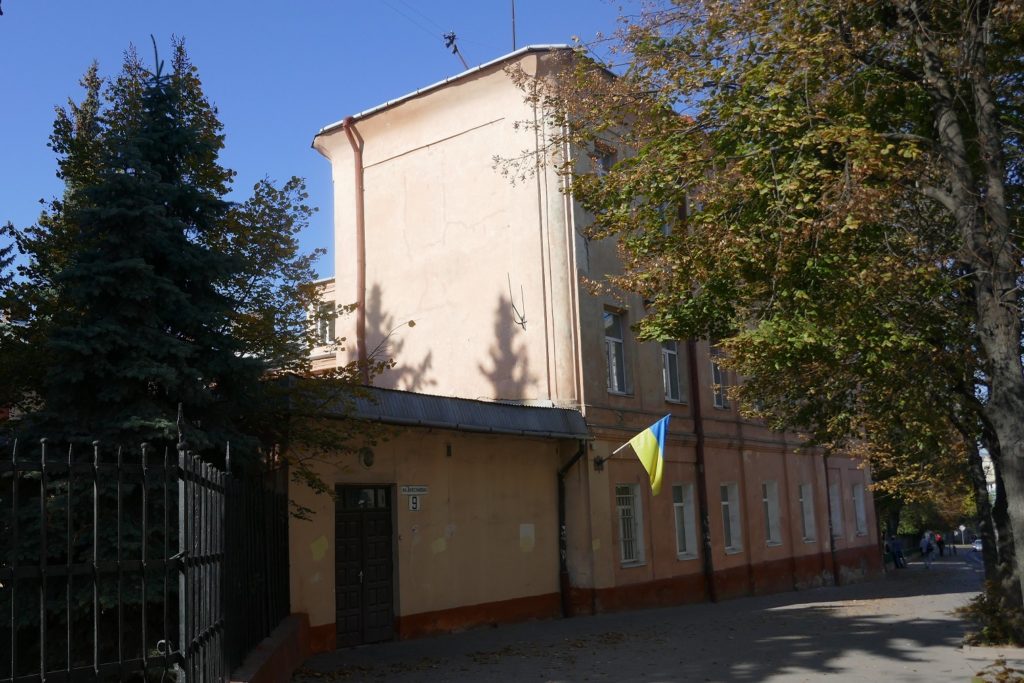
The north-east wing 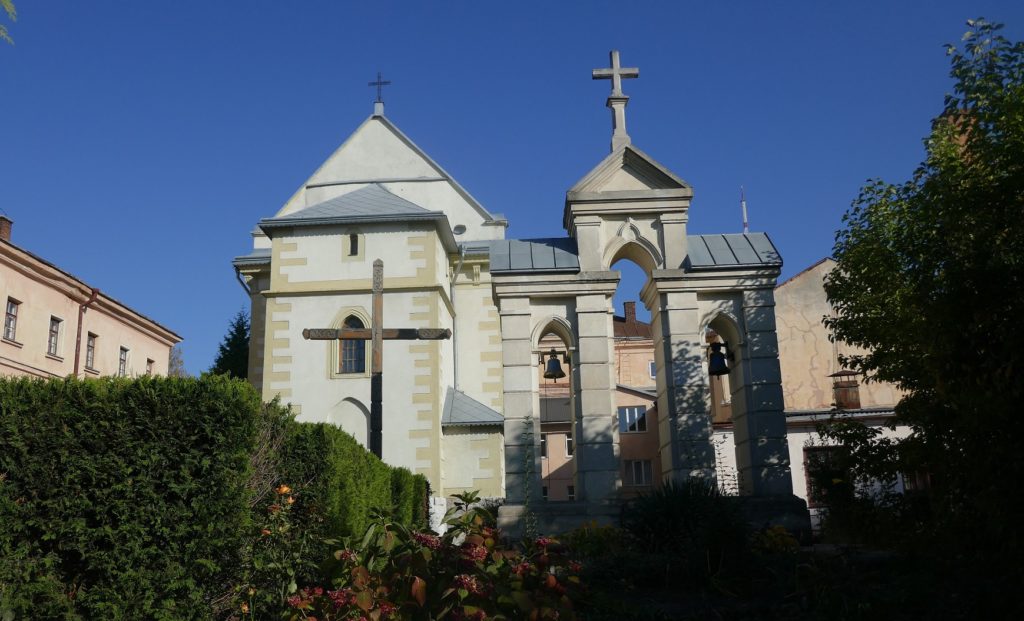
The former Church of St. Kazimierz (no. 50)
Large Barracks
Alternative names: Grosse Kaserne; Grosse Infanterie Kaserne
Formerly: territory of Armenian community
Barracks built in: 1824
Housed: Headquarters and 1st & 3rd battalions of the 80th Infantry Regiment
Location: 7 Zamarstynivska St.
Today: Owned by the city, used for business needs
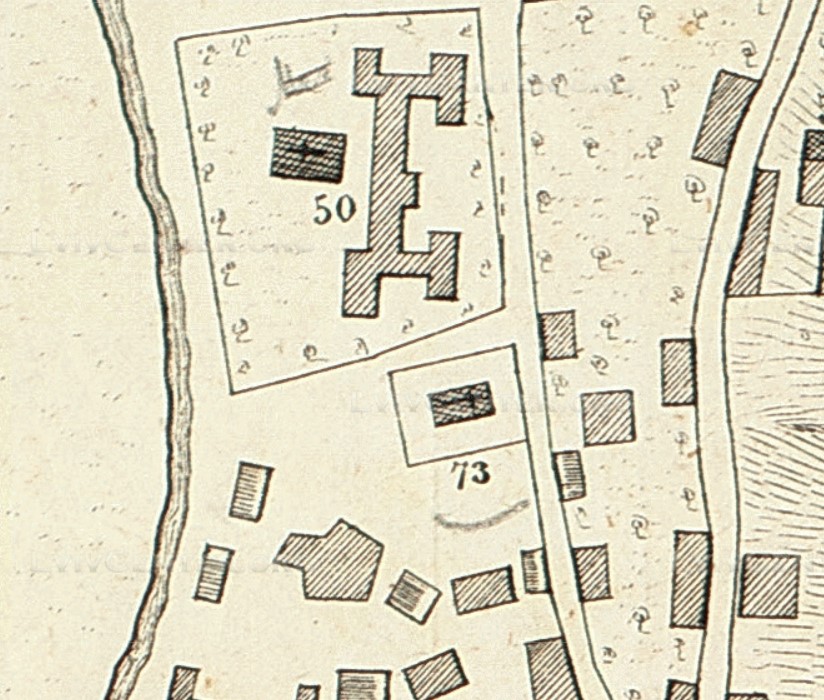
Before 1775
No. 73 Kościół św. Krzyża Ormiański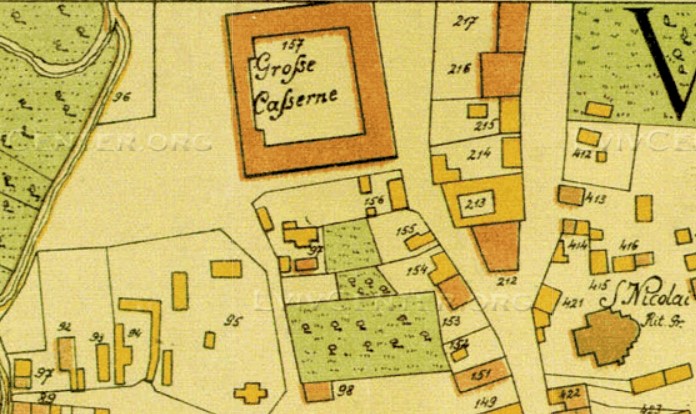
Early 1800s | Groſse Caſserne 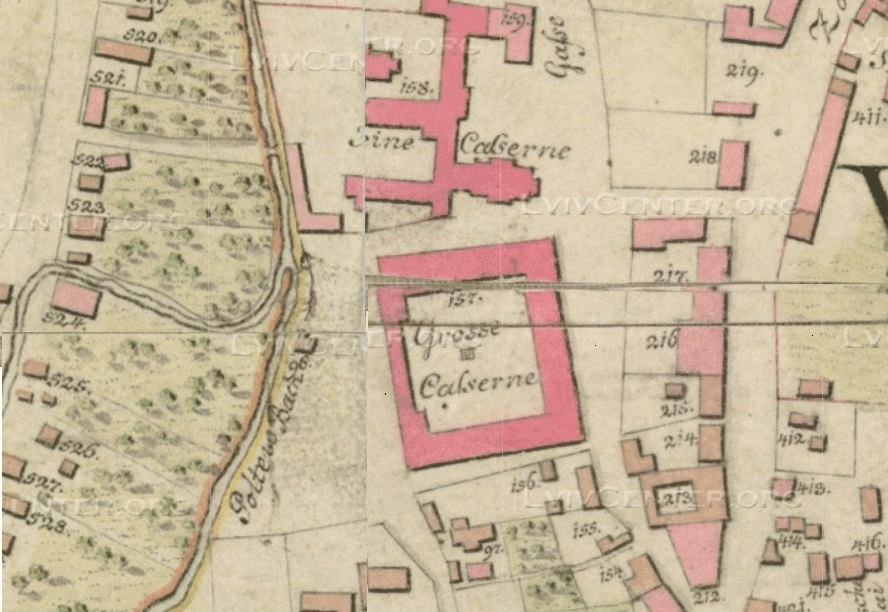
Early 1800s | Grosse Caſserne 
1841 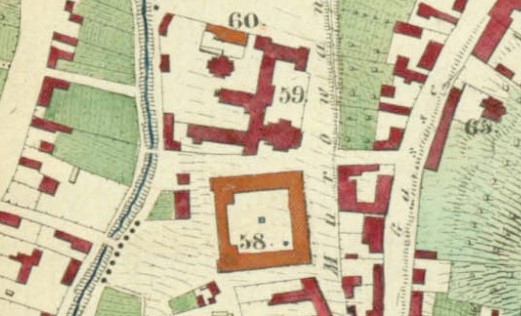
1844 | No. 58 Groſse Infanterie Kaserne 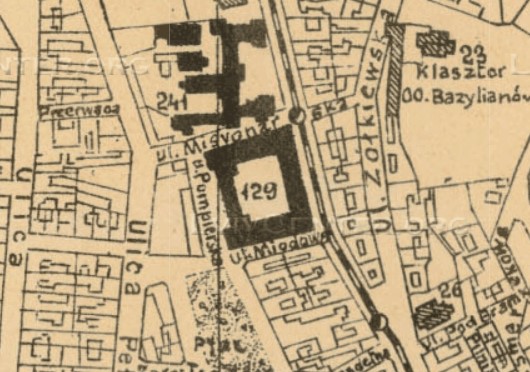
1910 | No. 129
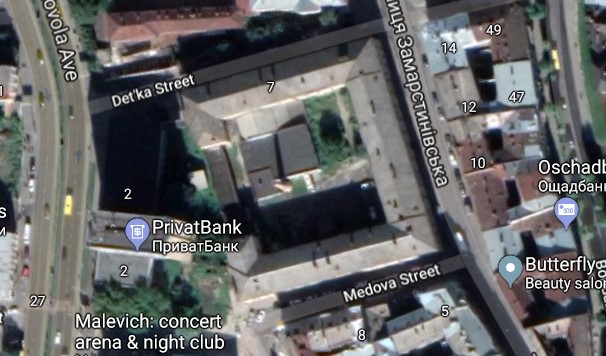
In 1824, on the site of the dismantled Armenian Holy Cross Church (No. 73 in first map above “Kościół św. Krzyża Ormiański”), which was in the courtyard of the former monastery, the Large Barracks were built in the style of the Austrian classicism. At the beginning of the 20th century, the headquarters and the 1st and 3rd Battalions of the Imperial and Royal Galician Infantry Regiment No. 80 (K. u. K. Galizisches infanterieregiment Wilhelm Ernst Grossherzog von Sachsen-Weimar-Eisenach, Herzog zu Sachsen № 80) were housed there. About 70% of the personnel were Galician Ruthenians.
Today the building is owned by the city. The structure has retained its original layout with long corridors and semicircular vaults, as well as its stairwells from the first half of the nineteenth century.
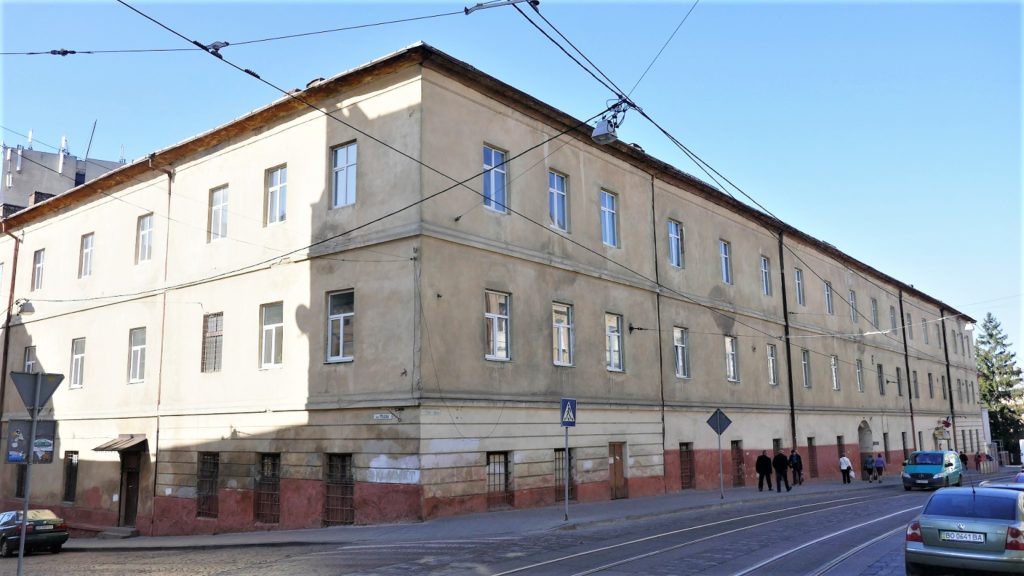
Jabłonowski Barracks
Alternative names: Jabłonowskische Caserne; Grenadier Casernes; Koszary piechoty; Landwehr Kaserne
Formerly: Stanisław Jabłonowski’s Palace and Park
Transferred to Austrian military: 1822; after 1848 palace reconstructed as caserne
Housed: Grenadier; later Infantry Regiment
Location: Palace – in front of 10-12 Rustaveli St.; Park and complex – between Rustaveli, Arkhypenka, Tarnavskoho Sts., and Petrushevycha Sq.
Today: Palace did not survive WWII; part of territory became Officers’ Colony
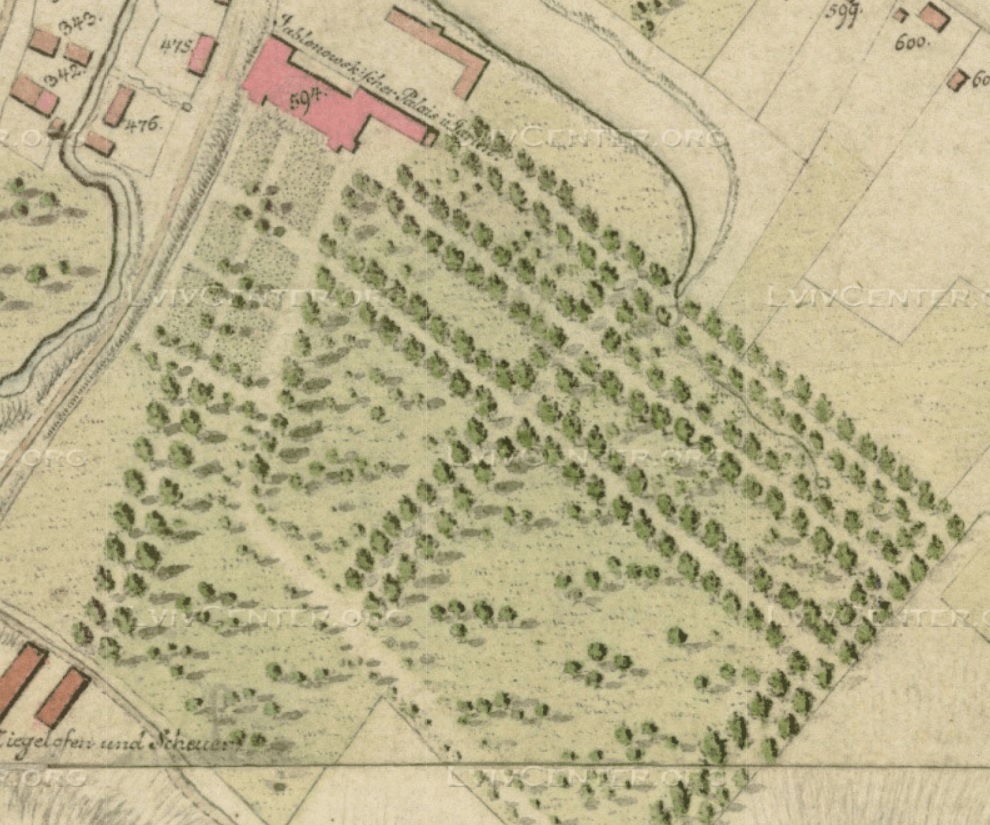
1802 | No. 594 Jablonowskiſcher Palais 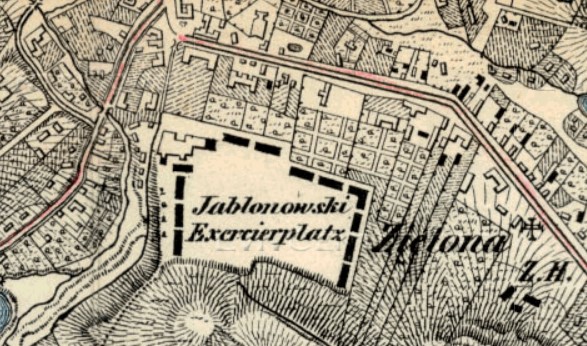
1836 | Jablonowski Exercierplatz 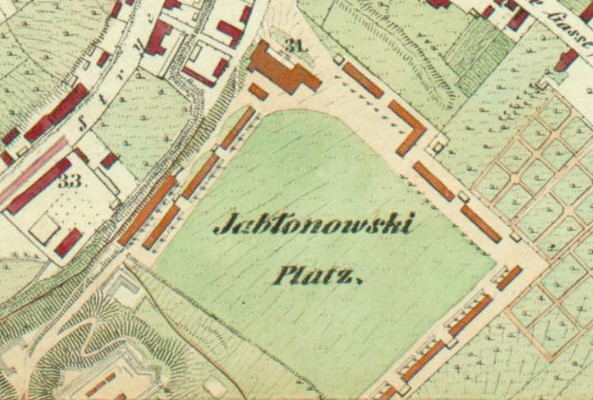
1844 | No. 31 Jablonowskische Kaserne 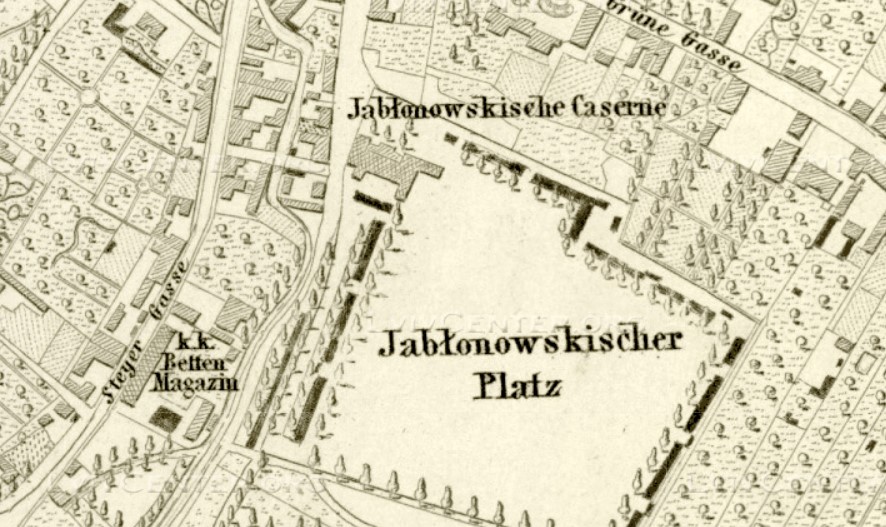
1863 | Jabłonowskische Caserne 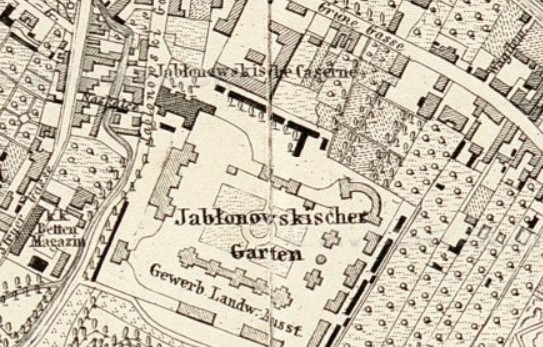
1878 | Jabłonowskische Caserne 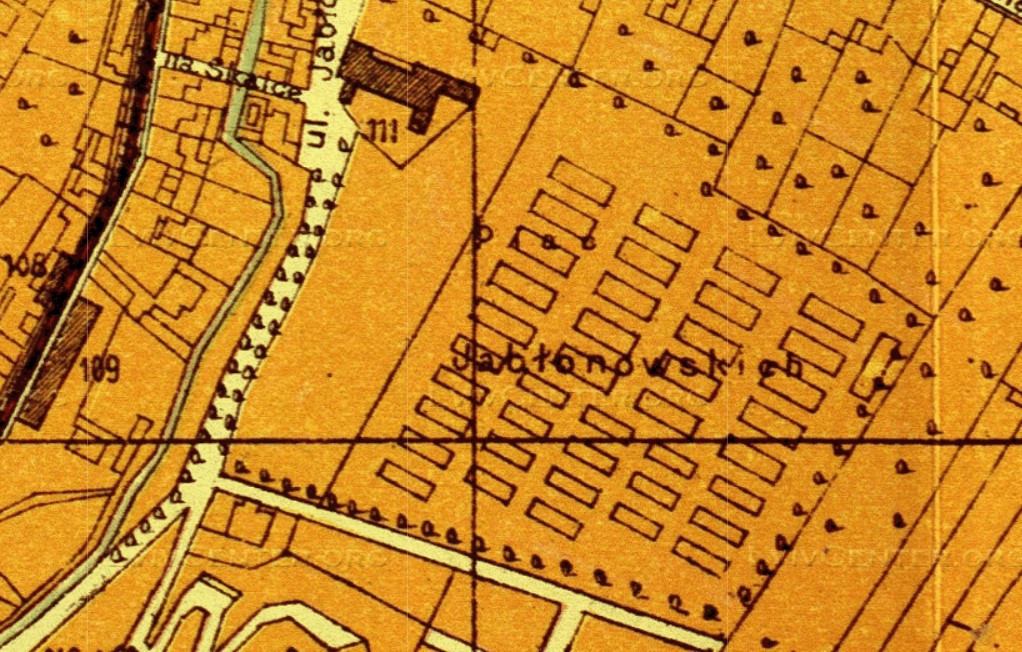
1895 | No. 111 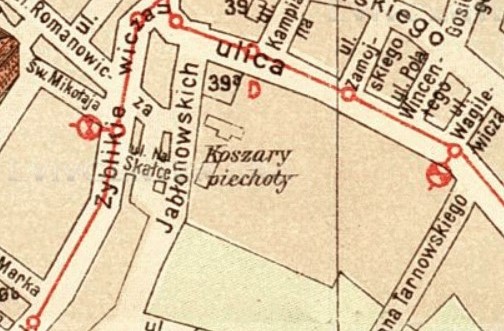
1910 | Koszary piechoty 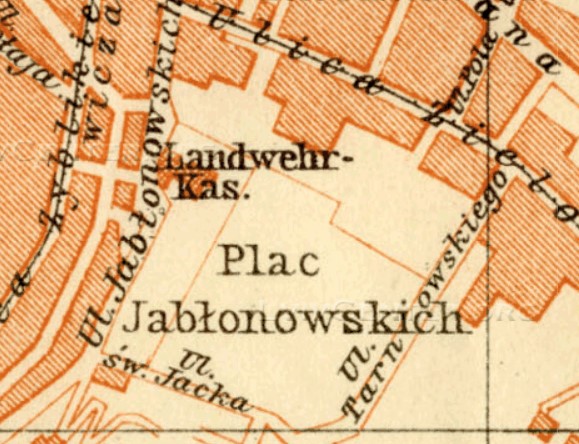
1911 | Landwehr Kas.
At the end of the seventeenth century Polish hetman Stanisław Jabłonowski acquired lands on the outskirts of Lviv and built a grand Baroque palace with a large park. In 1822 the palace became the property of the Austrian army. In 1832-1846 it was the residence of Governor Ferdynand Karol Józef Habsburg-Este. After the 1848 revolutions, the military was located here — the palace was redeveloped into barracks and the park into a parade ground for military exercises. In 1877 the first Regional Agriculture and Industrial Exhibition was held in the park.
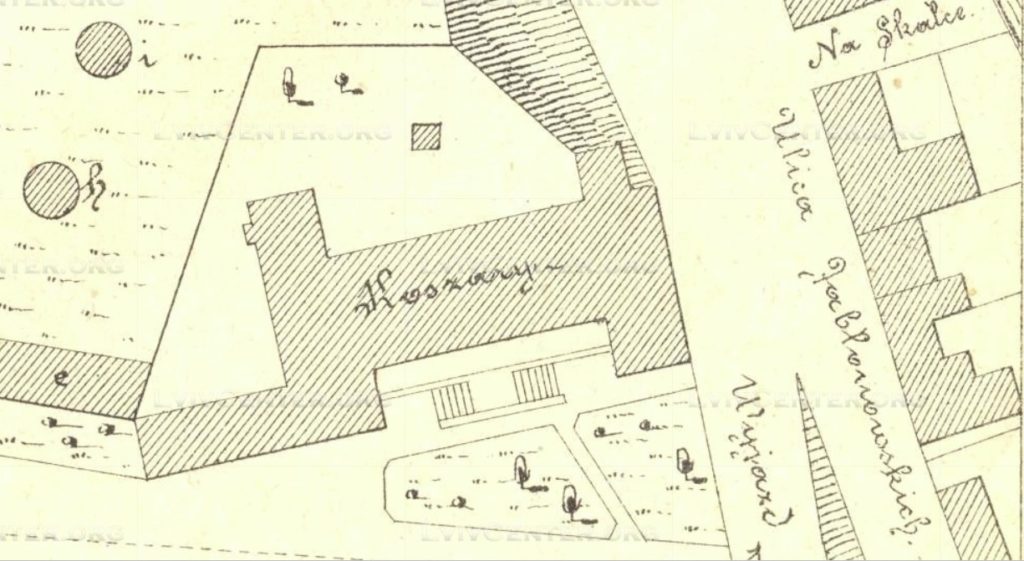
In the 1880s the palace was reconstructed and became part of the largest barracks complex in Lviv. Units of the Austrian Landwehr (including for some time the 19th infantry regiment Landwehr “Lemberg”) were stationed here. Other sources mention that from the late nineteenth to early twentieth centuries it housed the headquarters and two battalions of k.u.k. Infanterieregiment „Freiherr von Georgi“ Nr. 15. In 1914 the barracks housed the 55th infantry regiment of the Austrian army.
In the 1920s a large part of the territory was given to build housing for officers, which became known as the Officers’ Colony. The former Austrian arena, which was used for training in bad weather, became a sporting complex. The only government agency that exists in these buildings today is the Lviv Oblast branch of the Department for the Execution of Criminal Sentences (1 Arkhypenka St.).
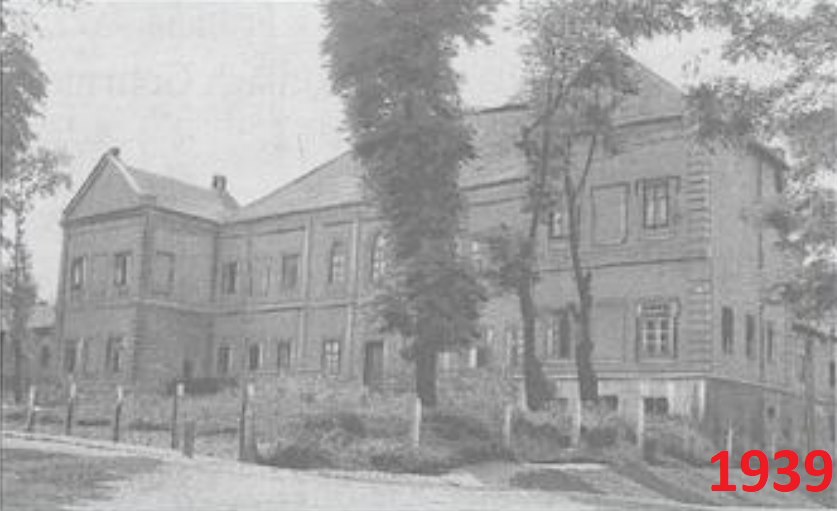
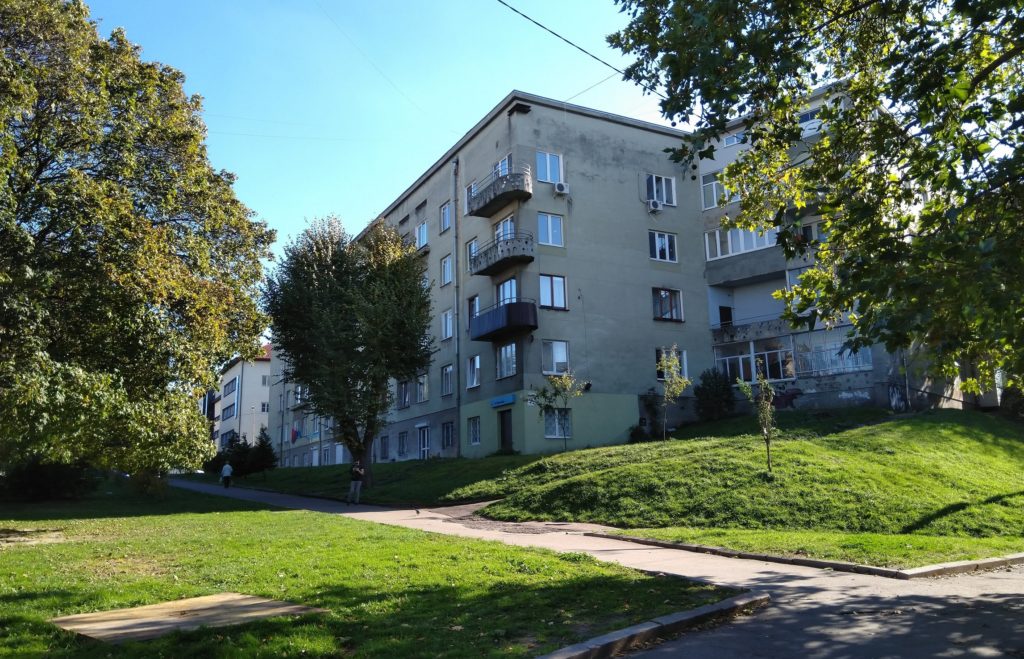
Archduke Ferdinand Artillery Barracks
Alternative names: k.k. Ferdinands Caserne; Koszary artyleryi
Formerly: Territory of Balaban Estate and Augustinian Monks
Barracks complex built in: 1839-1841
Housed: 30th Infantry Regiment; after 1850 Artillery
Location: Barracks – 40 Horodotska St.; complex – between Shevchenka and Horodotska Sts.
Today: Barracks building still owned by military; some of the other structures, former storehouses remain.
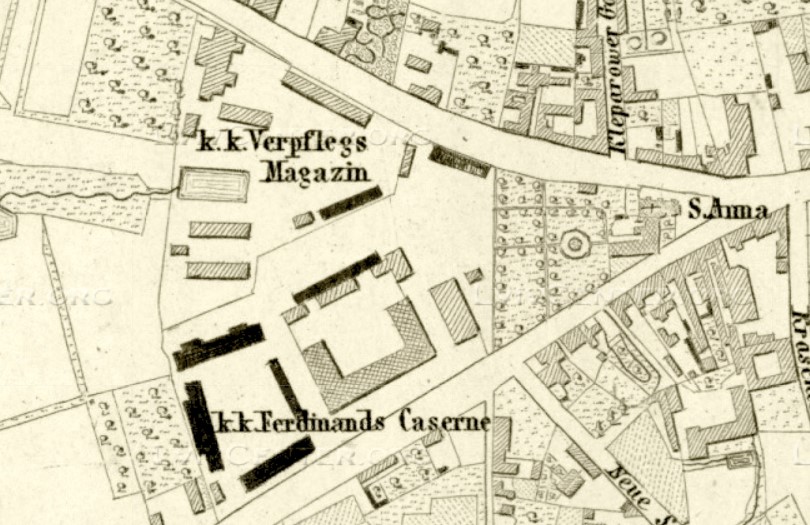
1863 | k.k. Ferdinands Caserne 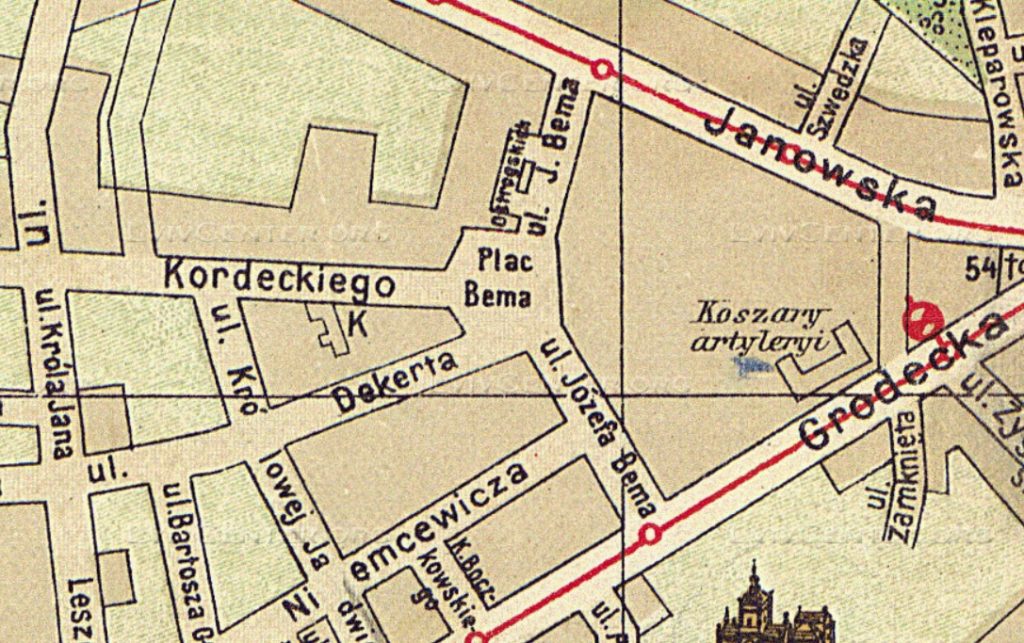
1910 | Koszary artyleryi 
1910 | Koszary artyleryi Ces. Ferdynanda 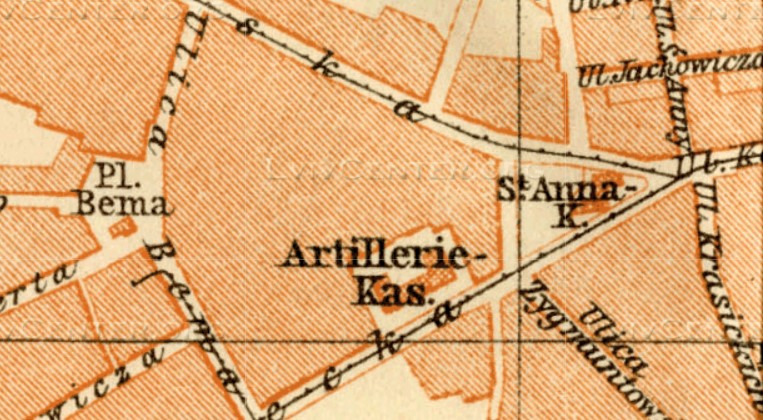
1911 | Artillerie Kas.

From the seventeenth century, the area where the Archduke Ferdinand barracks complex would later be located was part of Balabanivka – the property and estate of the Balaban family, nobility with Ukrainian roots. The property of the Augustinian monks was located nearby – St. Anna’s Garden, part of which would also become the property of the military.
The complex was built in 1839-1841. In addition to the main barracks building (40 Horodotska), the complex included a cadet school, parade grounds, provisions storehouses, a military bakery, ammunition magazines, and stables. From 1845 the barracks housed the 30th Regiment of Infantry. After the regiment was transferred to the newly built fortifications at the Citadel, the barracks were given to the artillery. A Cadet School was located in the adjacent barracks from 1840 to 1882. Just east of the main barracks building was as a military riding hall named Windisch-Graetz, which in the 1920s was used an electric tram depot. During the interwar period, the barracks were named after Józef Böhm and housed the 5th Regiment of Light Artillery. Since Soviet times it houses a military unit.
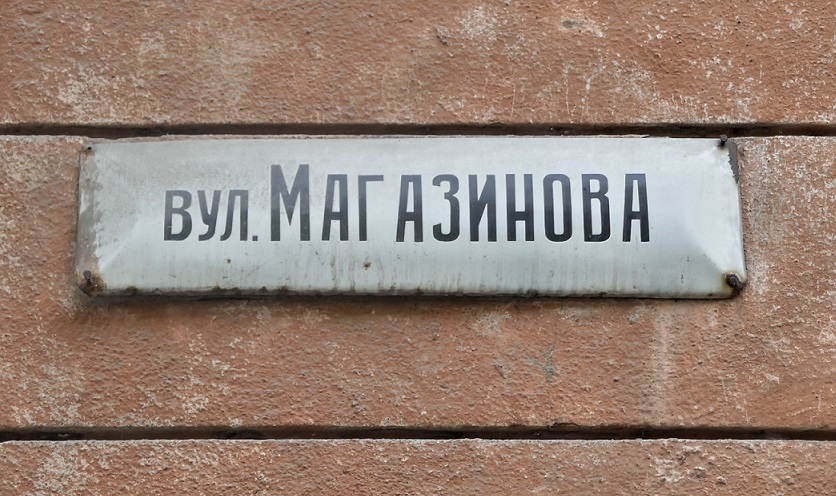
To this day, one of the side streets on the former territory is named Mahazynova (from Ger: magazin/Pol: magazyn (magazine)), and until the 1990s а neighboring street was named Proviantova (Ger: proviant/Pol: prowiant (provisions)) after the nearby military food depots.
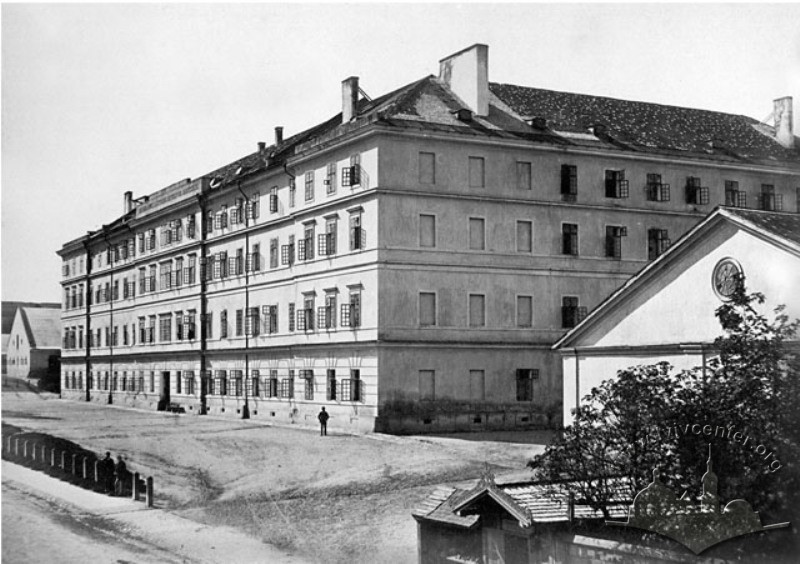
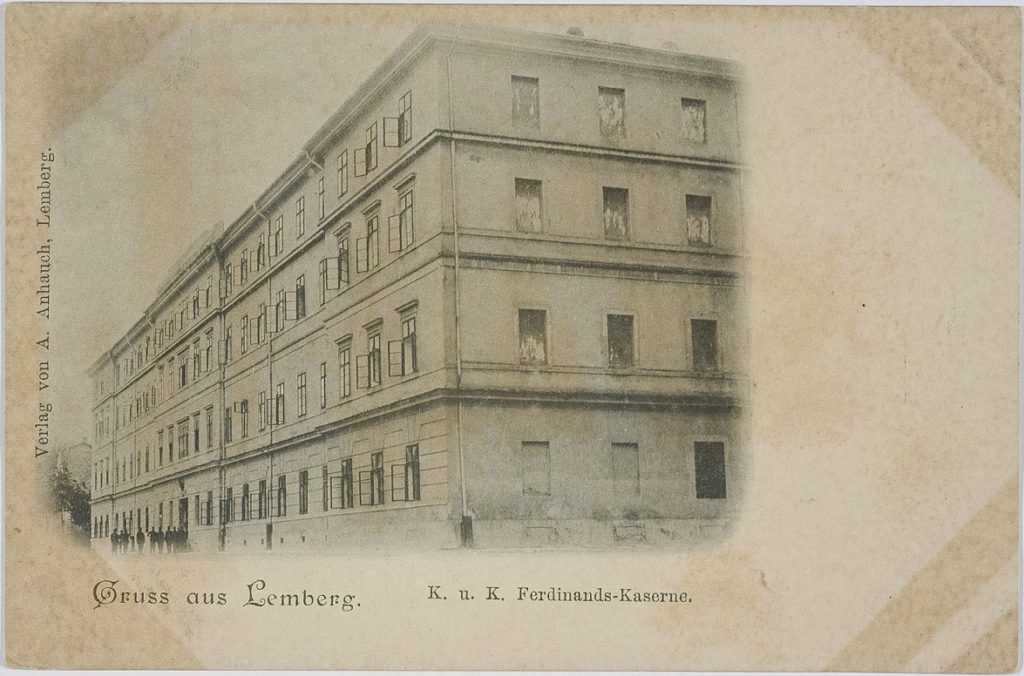
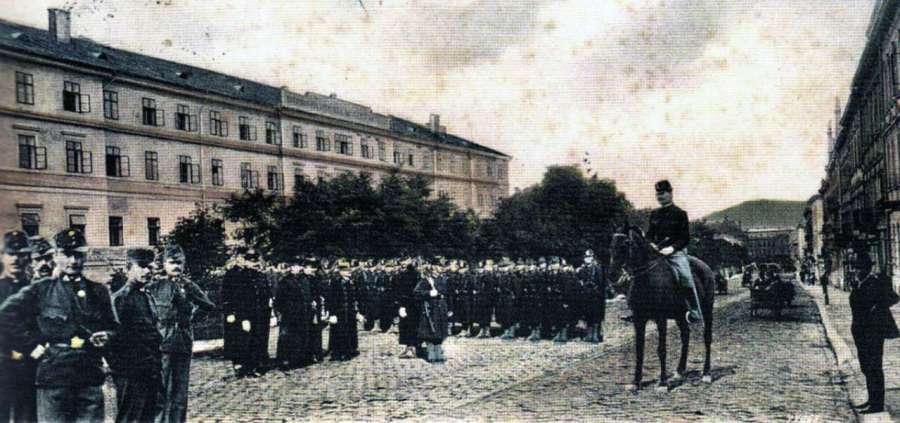
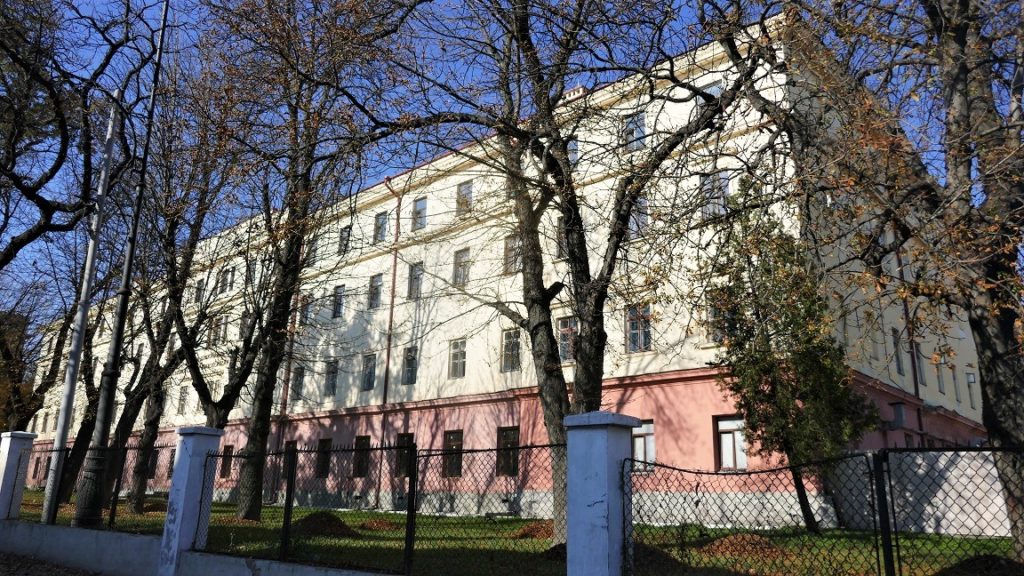
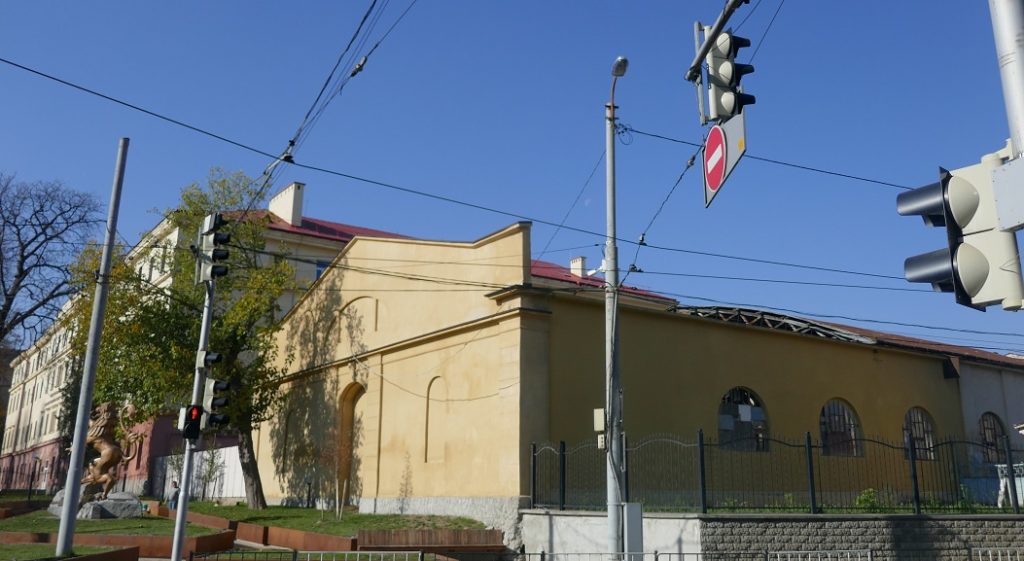
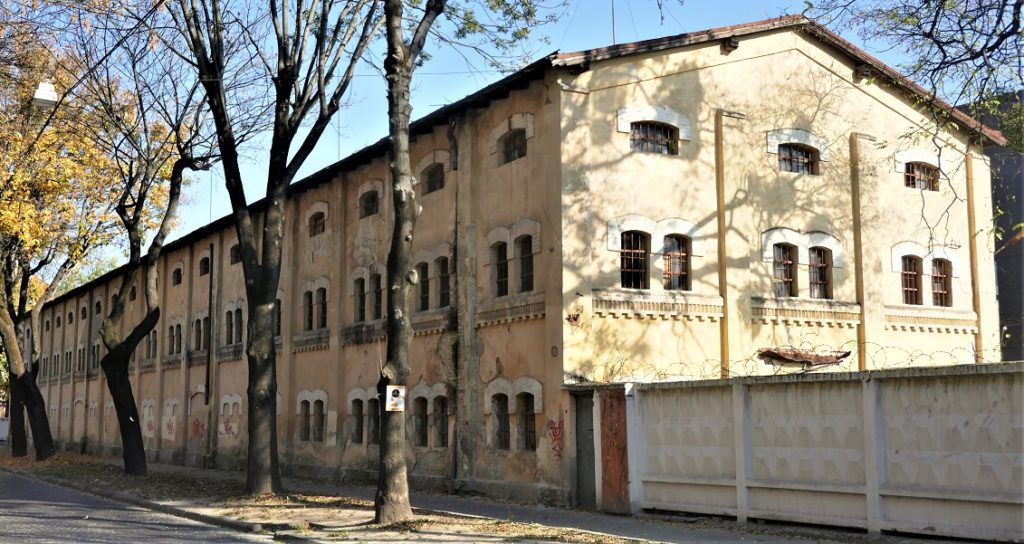
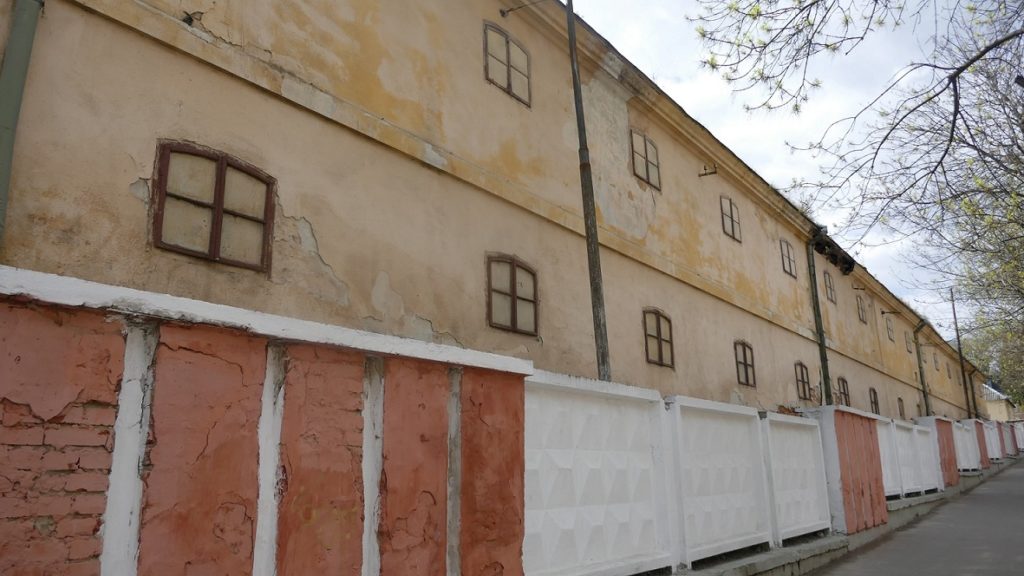
Franz Joseph Barracks
Alternative names: Heumarktkaserne (Hay Barracks); Franz Josefs Caserne; Koszary Franciszka Józefa; Koszary Heumarkt
Formerly: Hay market
Barracks built in: 1850-51
Housed: Battalion of the 80th Infantry Regiment
Location: 12 Lysenka St. (formerly pl. Franciszkański)
Today: Zakhid Air Command Officers House
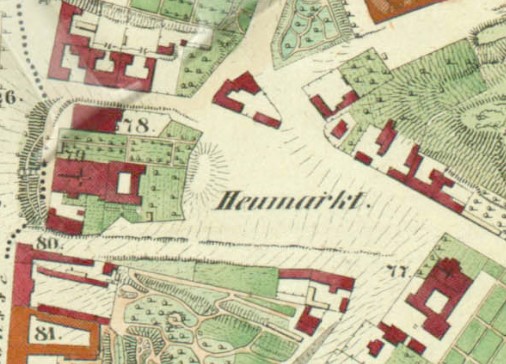
1844 |Heumarkt 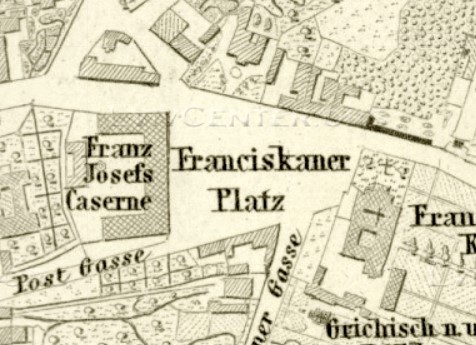
1863 | Franz Josefs Caserne 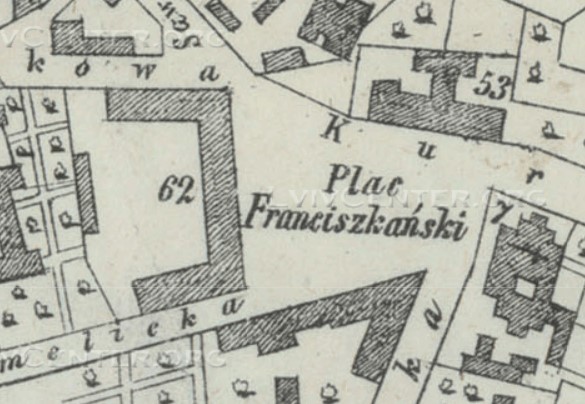
1871| No. 62 Koszary 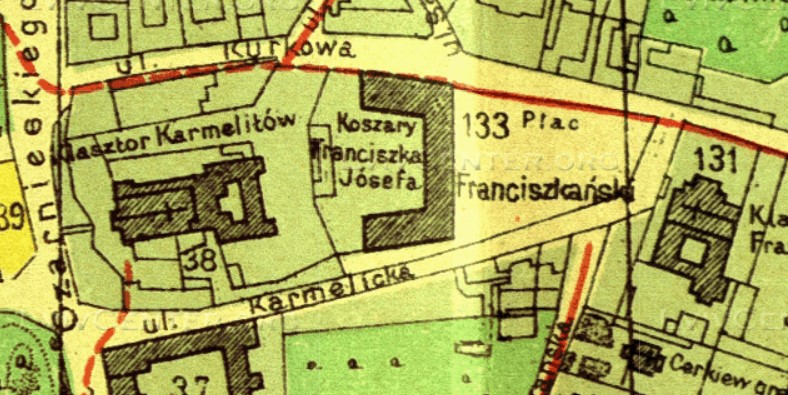
1895 | Koszary Franciszka Józefa 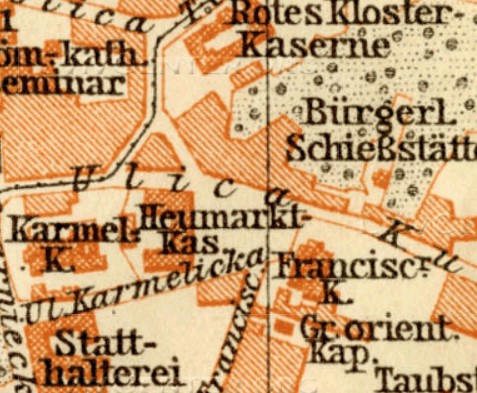
1911| Heumarkt Kaserne 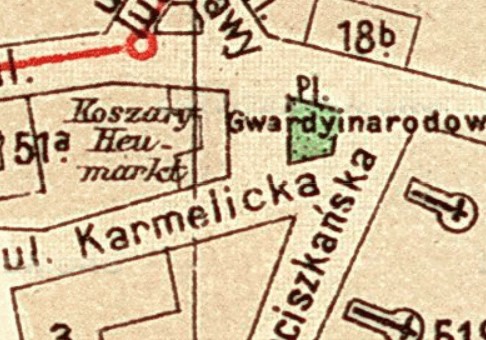
1911| Koszary Heumarkt
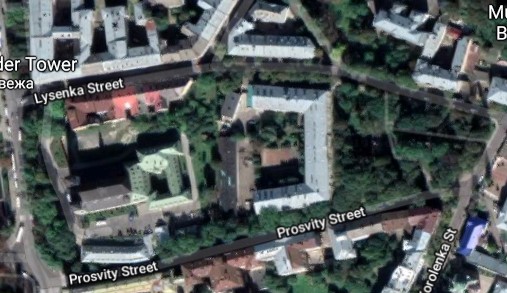
In the first half of the nineteenth century, a hay market was located on this site. In the 1850s a military barracks was built here, which was first called the Heumarktkaserne (Hay Barracks), and later named after Franz Joseph. It housed one of the battalions of the Imperial and Royal Galician Infantry Regiment of William Ernst Grand Duke von Sachsen-Weimar-Eisenach, Duke of Saxony No. 80 (K. u. K. Galizisches infanterieregiment Wilhelm Ernst Grossherzog von Sachsen-Weimar-Eisenach, Herzog zu Sachsen № 80).
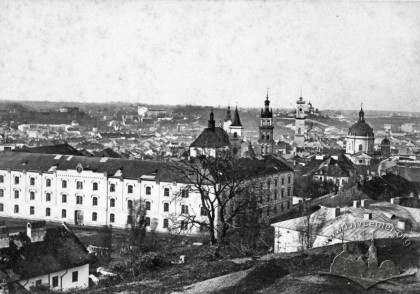
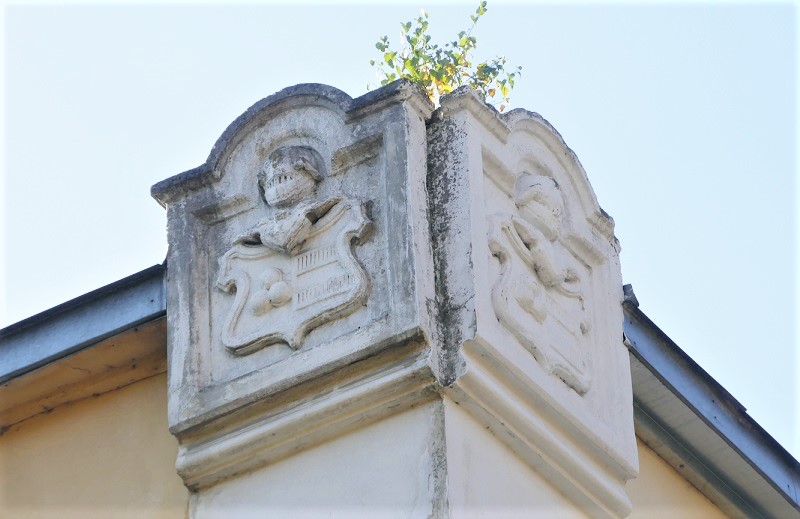
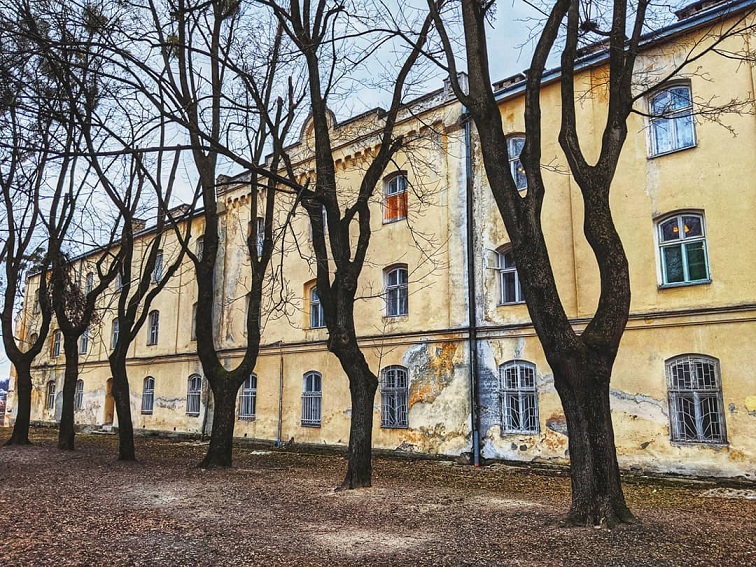

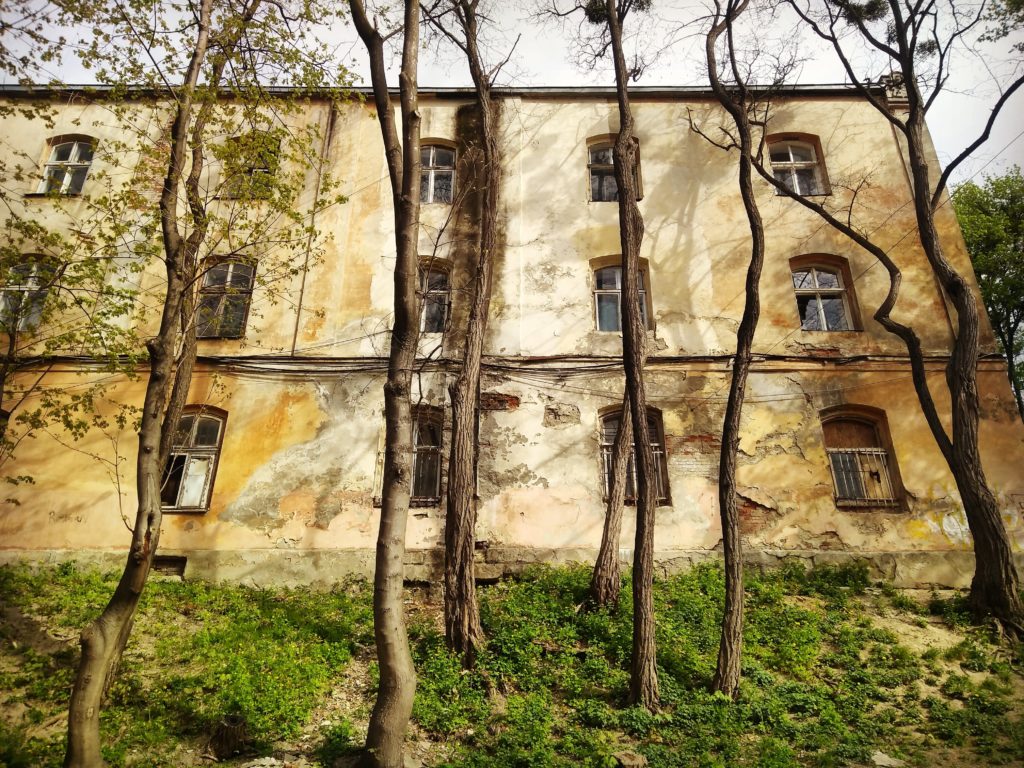
Kisielki Barracks
Alternative names: Koszary Kisielki; Kiselka Caserne
Formerly: Territory of Benedictine convent
Transferred to Austrian military: in 1804 it was rented for the Barracks; in 1864 the city purchased the plot
Housed: Cavalry, namely the First Regiment of Lancers
Location: 1 Donetska St.
Today: Residential building
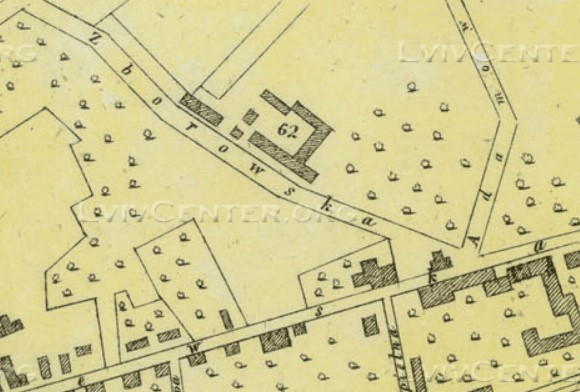
1871 | No. 62 Koszary Kisielki 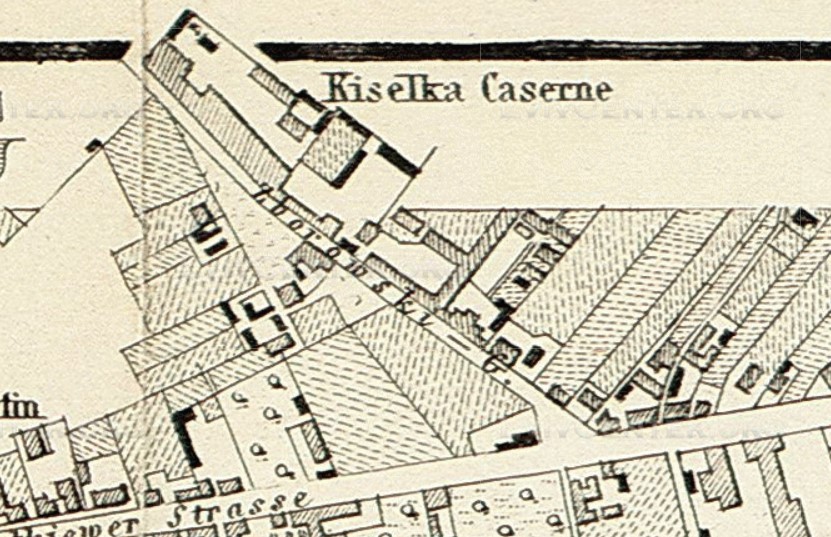
1878 | Kiselka Caserne 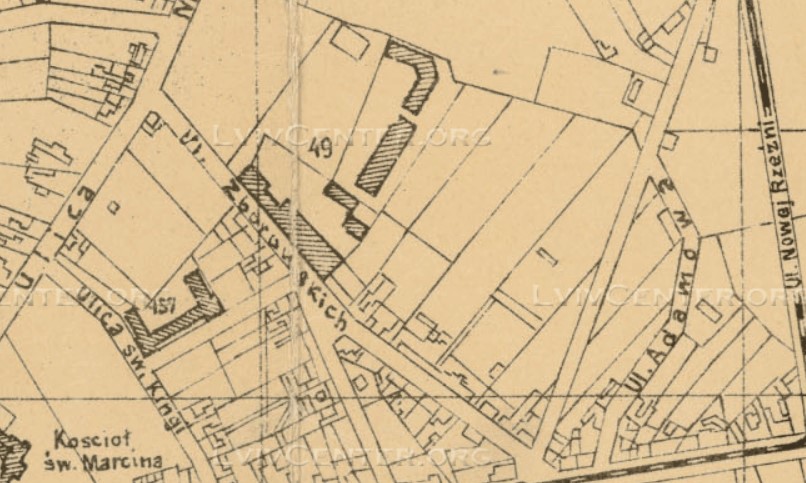
1910 | probably No. 49
For a long time the plot belonged to the Benedictine convent; from 1804 it was rented for the Kisielki Caserne. The cavalry was deployed there, namely the First Regiment of Lancers. According to the contract signed on 16 September 1864, the Community of the City of Lviv purchased this plot from Karol Kisielka together with his significant debt to the convent (DALO 2/1/3349:9). (lvivcenter.org)
The building that exists today on the plot was built in 1924 as a social housing construction project for workers at nearby the City Cleaning Facility; today it is a residential building.
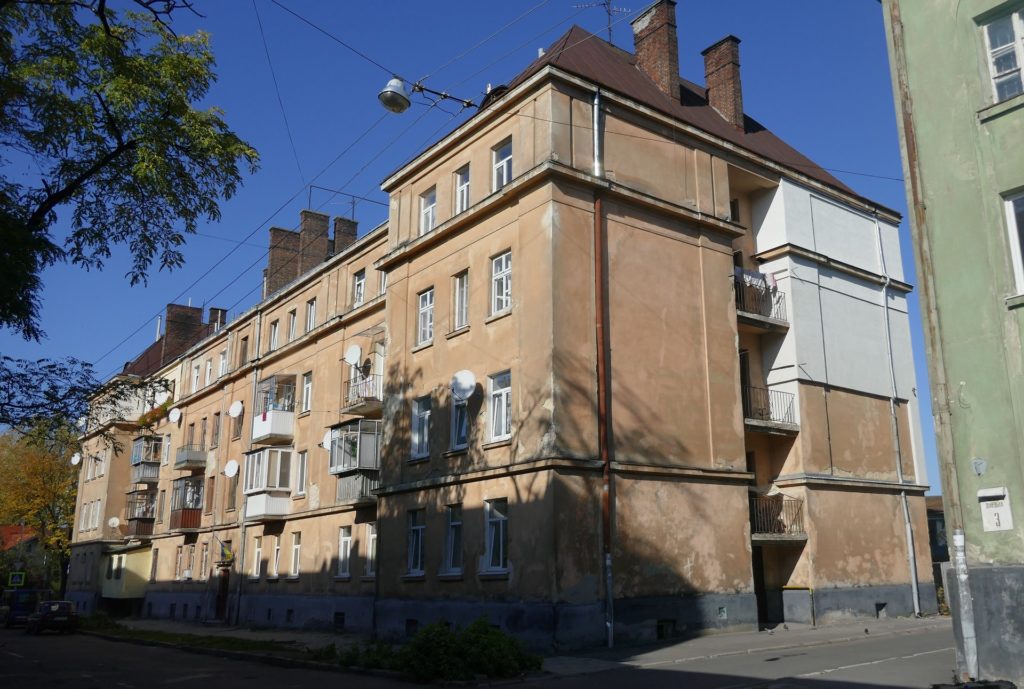
Citadel Barracks
Alternative names: Cytadela, Defensions Caserne; Citadelle
Formerly: Territory of Szembek and later Wronowski family
Barracks built in: 1850-1856
Housed: Austrian 30th Infantry Regiment
Location: Hrabovskoho St.
Today: Since 1990 it houses a bank and office center

1855 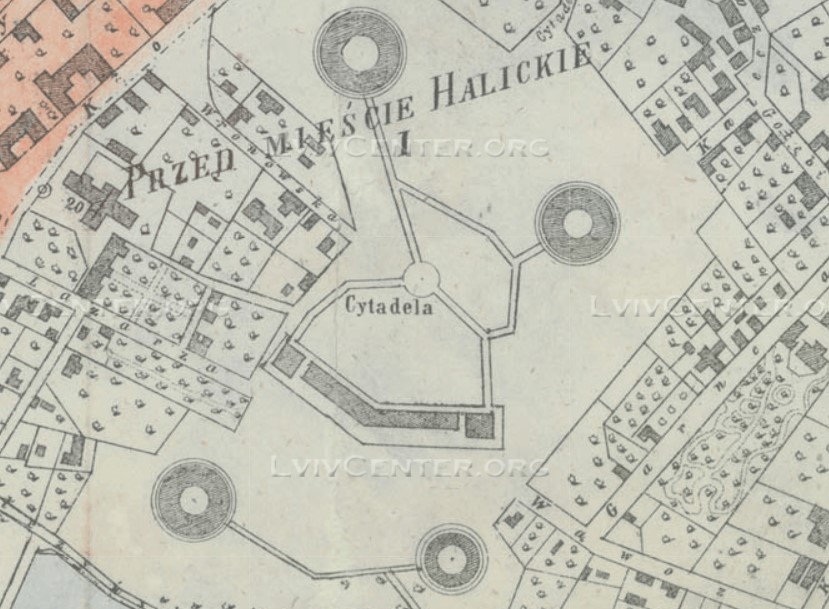
1871 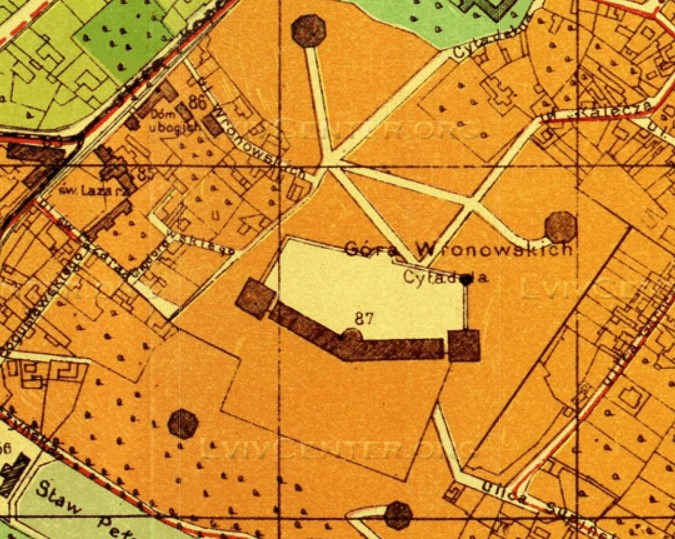
1895 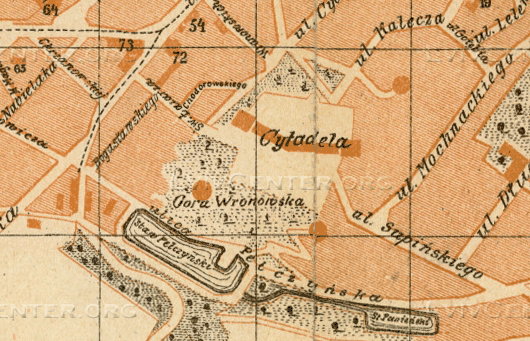
1902
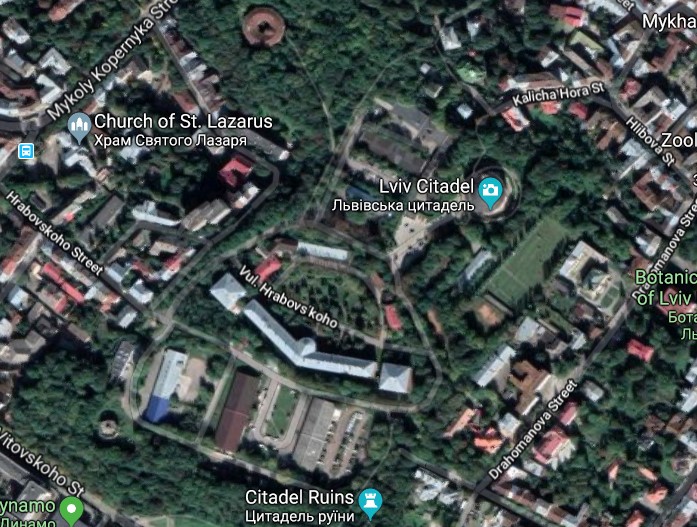
After the Revolutions of 1848, the Austrian government ordered the great cities of the empire to build structures for artillery and military warehouses. For this purpose the Lviv citadel was built in 1850-56 on the strategic Kalicha and Wronowska Hills. The fortification included four round towers-bastions and a three-storey defense barracks flanked by square bastions.
The barracks housed the Austrian 30th Infantry Regiment. In 1864-65, participants of the Polish January uprising were held in the citadel prison cells. In November 1918, the Citadel was one of the main outposts in the defence of the capital of the West Ukrainian People’s Republic. During the interwar period, the 19th infantry regiment was stationed here. In 1941-1944, the Nazis converted the territory into a concentration camp for Soviet, French, Belgian, and Italian prisoners of war.
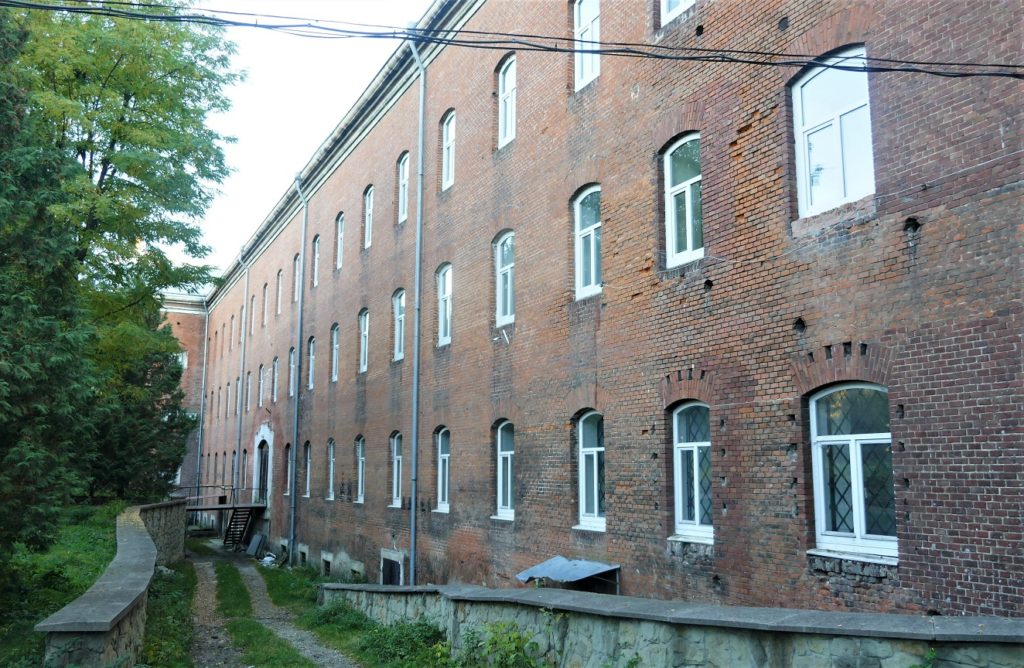
The barracks building 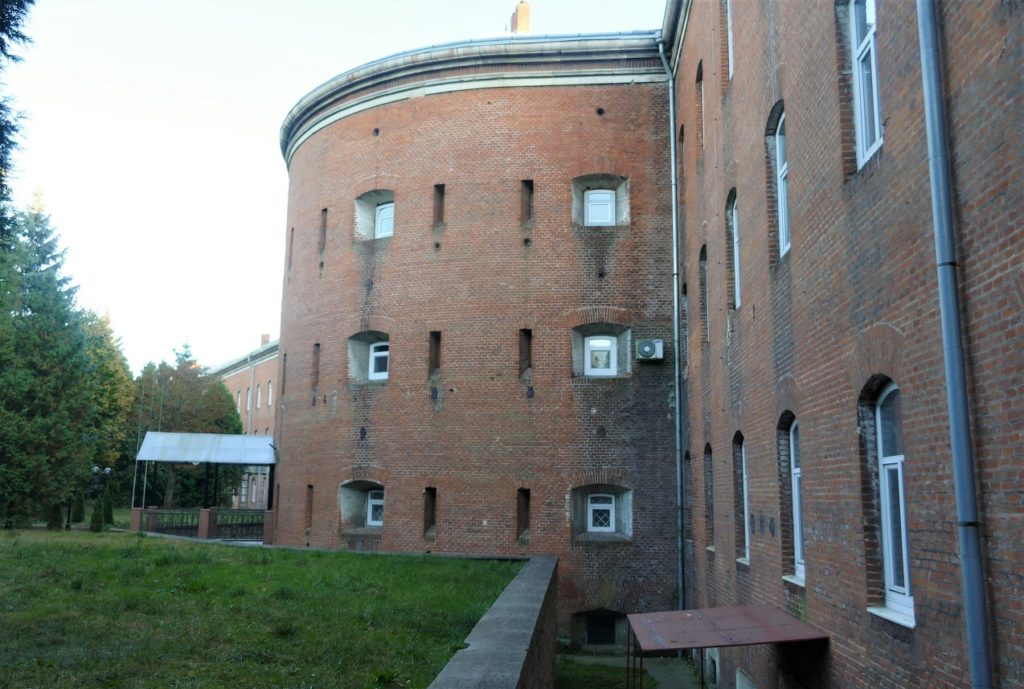
The barracks building 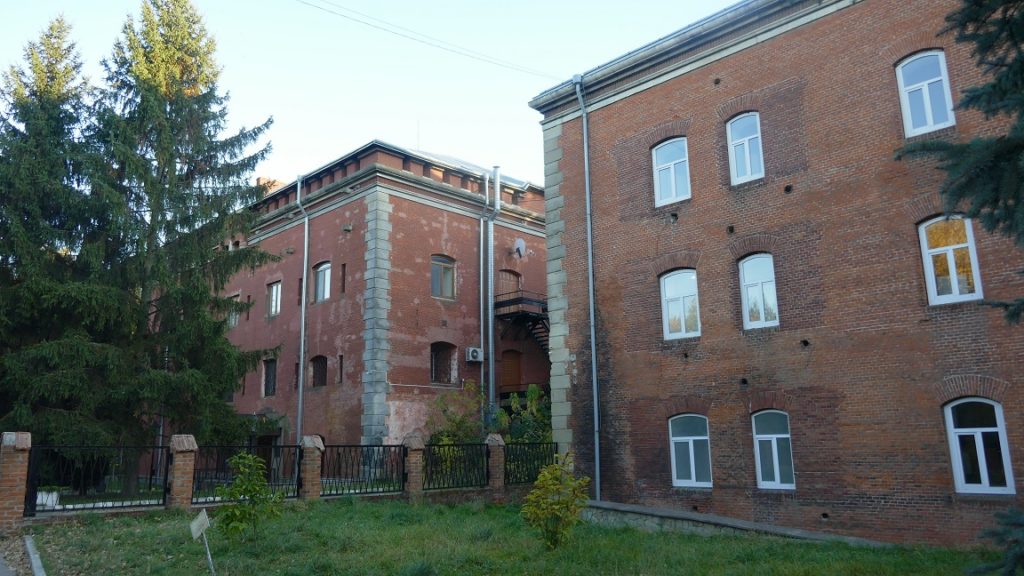
Square bastion 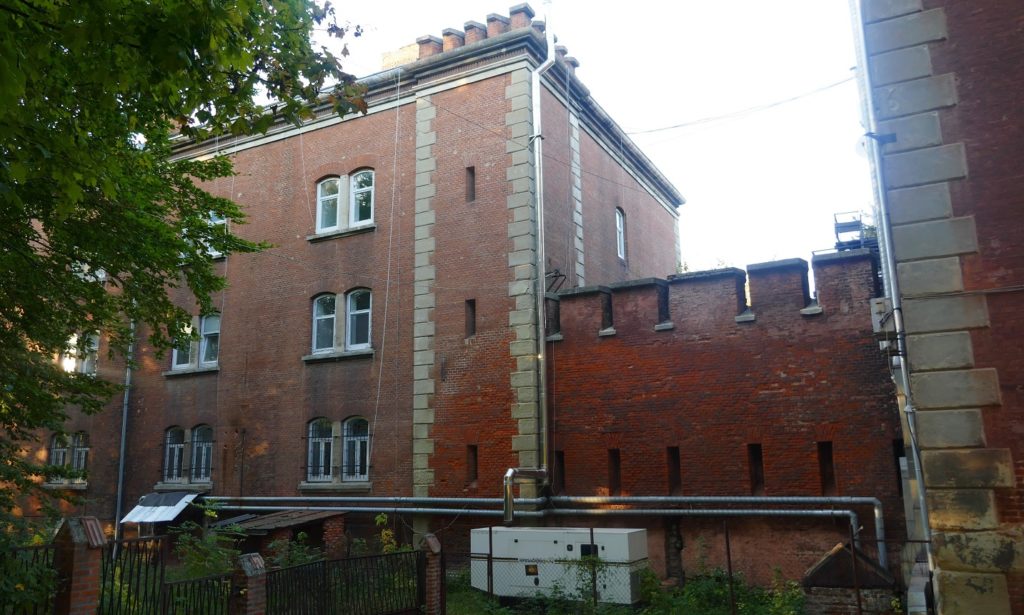
Square bastion 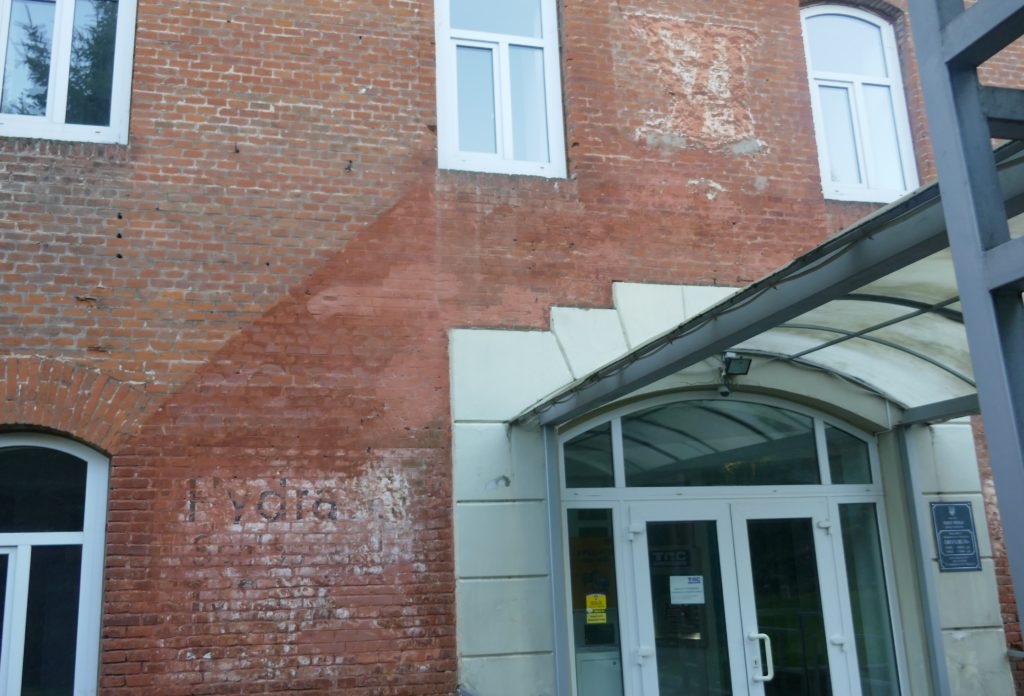
Ghost signs from Nazi times

One of the round towers 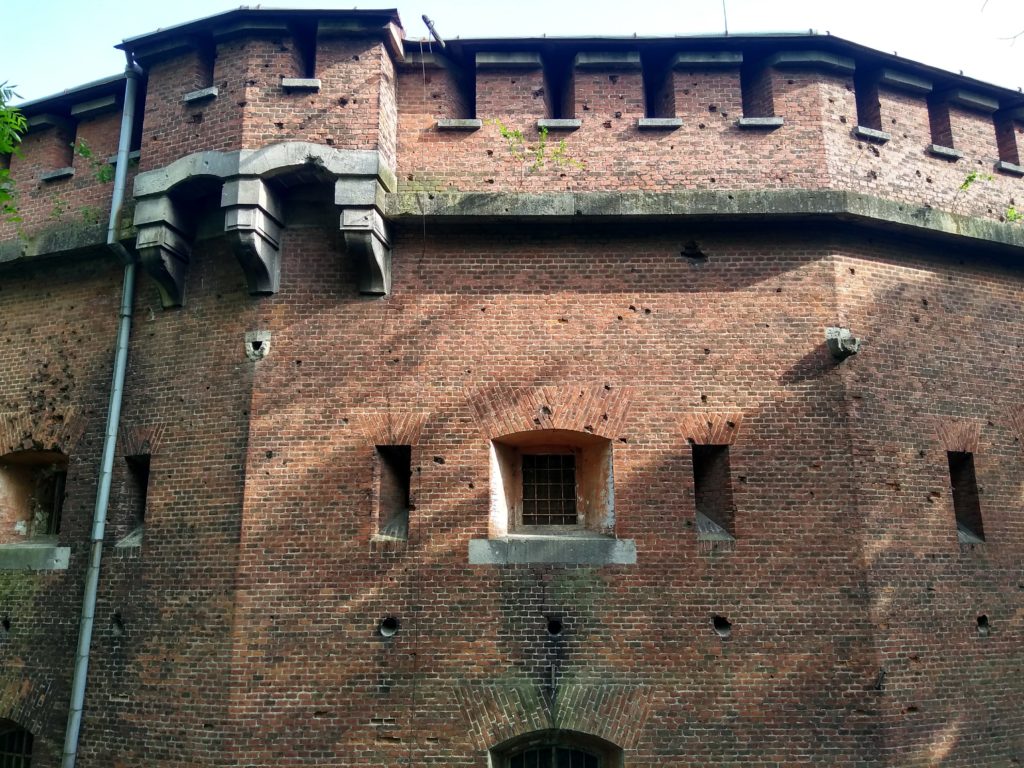
One of the round towers
See also Part II:
By Areta Kovalska
Sources:
Андрій Козицького, Енциклопедія Львова, том 3, Літопис. Львів, 2010.
Вулиця Замарстинівська, Вікіпедія
Колегія театинів, Вікіпедія
Вул. Лисенка, 12 – Будинок Офіцерів ПВК “ЗАХІД”, Інтерактивний Львів, Центр Міської Історії
В’язниця №2, або трагедія Замарстинова
Пляц військової частини, Центр Міської Історії
ВУЛ. ГРАБОВСЬКОГО, 11 – БУДІВЛЯ БАНКУ (КОЛИШНІ КАЗАРМИ ЦИТАДЕЛІ)
Донецька, 01 – Житловий будинок, Інтерактивний Львів, Центр Міської Історії
Казарми Фердинанда – 174 роки на службі військових, Фотографії Старого Львова
НЕТУРИСТИЧНИЙ ЛЬВІВ: «ГОЛЛАНДСЬКІ» БУДИНОЧКИ, ПАЛАЦ-БІБЛІОТЕКА ТА КОСТЕЛ З ГРАМПЛАТІВКАМИ
Палацово-парковий ансамбль Яблоновських, або площа Євгена Петрушевича (відео), Фотографії Старого Львова
Maps:
http://www.lvivcenter.org/uk/umd/location/lviv/
http://igrek.amzp.pl/result.php?cmd=pt&uni=-1550139&box=0.0001&hideempty=off

